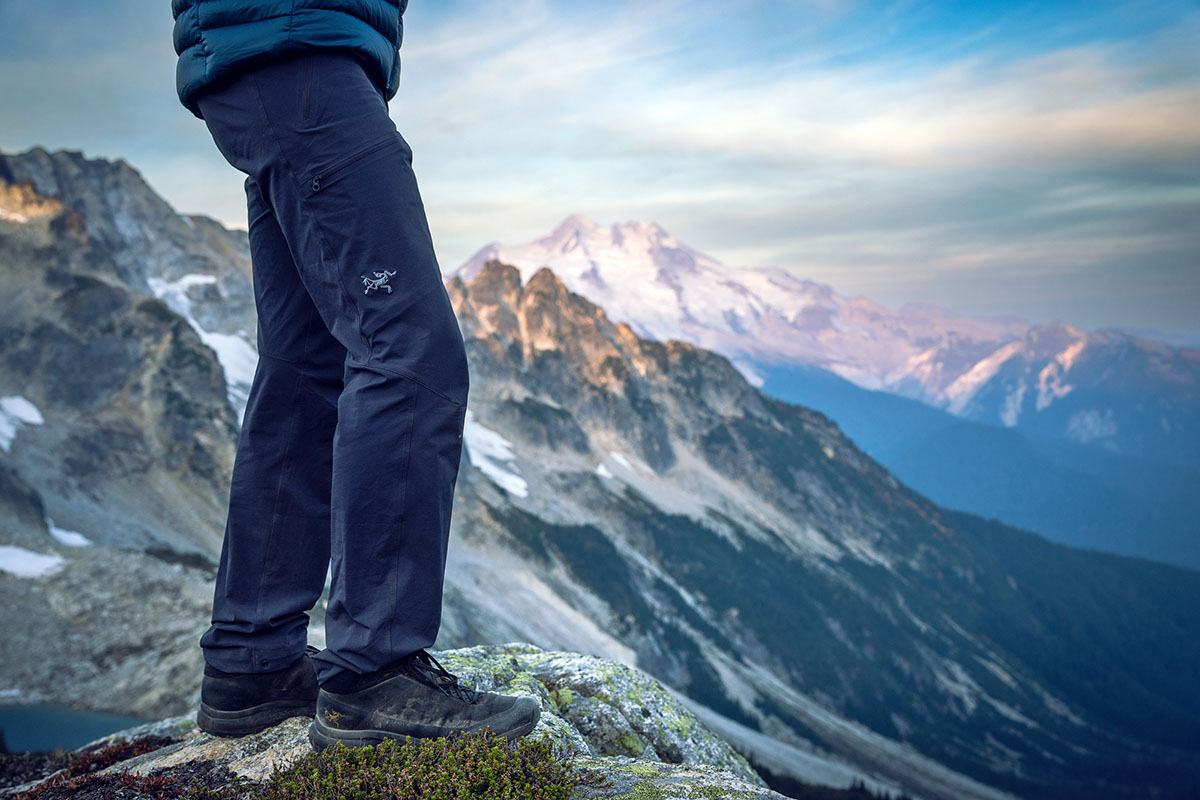
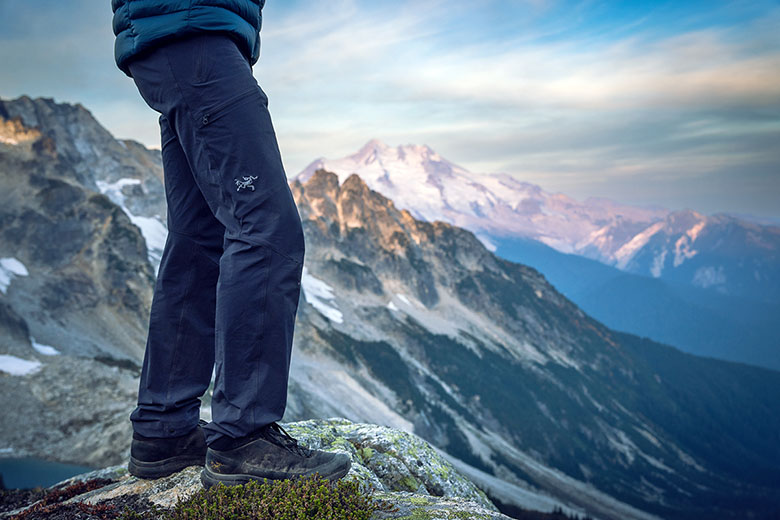
Switchback Travel (Jason Hummel)
A great pair of hiking pants offer comfort, freedom of movement, the versatility to perform well in a range of environments, and durability over the long haul. In terms of materials, many of today’s top pants are made from lightweight and stretchy nylon blends for mobility and protection from wet and windy weather and increasingly feature recycled fabrics and PFAS-free DWR coatings. We took some of the best pants on the market on rowdy romps through the Pacific Northwest, technical treks through the Himalayas, and multi-month thru-hikes to bring you our 17 favorites for 2025. For more information, see our comparison table and buying advice after the picks, as well as our breakdown on how we approach the testing process. One additional note: This article includes recommendations for both men and women, but we’ve also written a dedicated round-up on the best women’s hiking pants.
Editor's note: We updated this guide on April 28, 2025, to swap the Kühl Renegade Convertible and Outdoor Research Cirque III to the latest versions. We also combed through the guide to ensure all information—including prices, colorways, and specs—were current at the time of publishing.
 Materials: 86% nylon, 14% spandex
Materials: 86% nylon, 14% spandex
Weight: 12.7 oz.
Belt included?: No
What we like: Ferrosi fabric is stretchy, breathable, lightweight, and tough.
What we don’t: Doesn’t come with a built-in belt and not as around-town-friendly as some.
The fabric of a hiking pant makes or breaks it, and Outdoor Research has a real winner in its signature Ferrosi nylon blend. Featuring a healthy dose of spandex, this highly stretchy and lightweight material offers excellent mobility for hiking, scrambling, and even climbing. In addition, the Ferrosi excels at temperature regulation: We’ve found it to be tough enough to cut the wind and shed light rain, but it dries quickly and breathes when temperatures start to climb. It’s worth noting that the latest Ferrosi update brought minimal changes, with highlights including a bump in sustainability—the fabric is now bluesign-approved and 46%-recycled—but the winning formula has gone largely unchanged for years, which is fine by us. We've already put the latest iteration through several taxing treks—including a backpacking trip through the Grand Canyon and a bushwhacking mission in East Africa—and find it downright difficult to ding. It breathes beautifully, is surprisingly durable, and packs down to nothing.
OR's Ferrosi has been a longtime favorite of ours, but we do have a couple of nitpicks with the design. First off, you don’t get a built-in belt like the Stretch Zion below, and the drawstring along the inside of the waistband is a less effective solution (it's harder to quickly access and adjust if you need to tighten or loosen the fit). Additionally, the thin fabric and basic pocket layout make the Ferrosi less appealing than alternatives like the Prana Stretch Zion or Kühl Silencr below for everyday wear and travel. That said, for hitting the backcountry, it’s a fantastic and highly comfortable option and has been our go-to hiking pant for years now. Of note: The Ferrosi line has expanded and now includes a convertible option, jogger, and travel variations.
See the Men's Outdoor Research Ferrosi See the Women's Outdoor Research Ferrosi
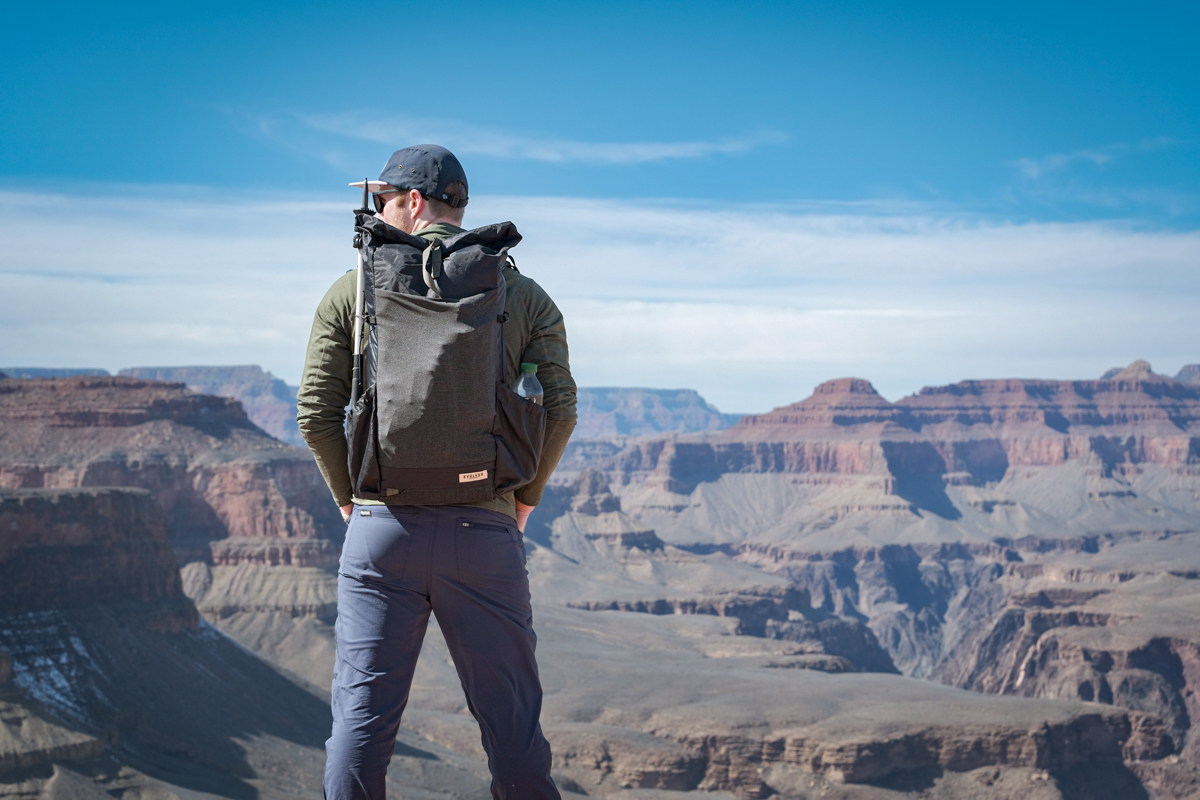
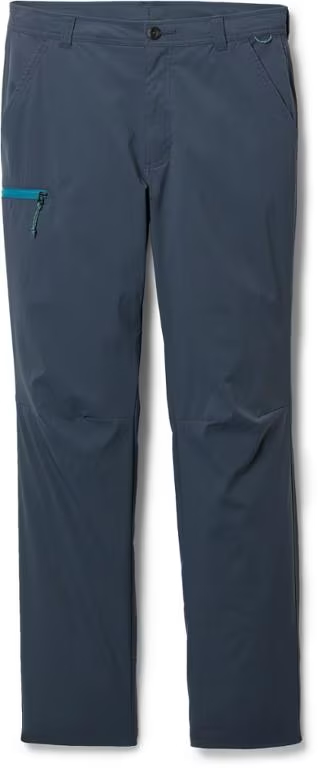 Materials: 94% nylon, 6% spandex
Materials: 94% nylon, 6% spandex
Weight: 11.6 oz.
Belt included?: No
What we like: Excellent price for a light and comfortable design; offered in a good range of color and sizes.
What we don’t: Not a standout in build quality or toughness; thin fabric is best in mild weather.
We’ve had mixed experiences with REI’s budget-oriented Trailmade line, but the namesake pants are a strong entry in the hiking market. Both the men’s and women’s versions stand out with their lightweight nylon construction, which makes them breathable and quick to dry—ideal for summer hiking and travel. Comfort is another highlight: On a recent alpine lake-hopping backpacking trip in Washington State, we were consistently impressed by the soft and stretchy fabric, athletic fit, and functional articulation that limited bunching. Tack on practical storage—the zippered thigh pocket is a great add-on—and reinforcements at the cuffs for a boost in durability, and you have a well-rounded, warm-weather hiking pant.
The Trailmade undercuts the Outdoor Research Ferrosi above by $29, and there is a corresponding drop in build quality. The thin fabric isn’t as tough or weather-resistant—although the DWR coating and quick-dry material are helpful if the pants get wet—and some stitching has come loose in areas that rubbed against rock while scrambling and hanging out at camp. As such, we think it’s worth upgrading if you’ll be out in rough terrain or want something truly long-lasting. But for summer hiking, occasional backpacking, and travel, the REI Trailmade checks nearly all the boxes at a great price. It doesn’t hurt that both the men's and women's versions are available in a decently wide selection of sizes and inseam lengths.
See the Men's REI Co-op Trailmade See the Women's REI Co-op Trailmade
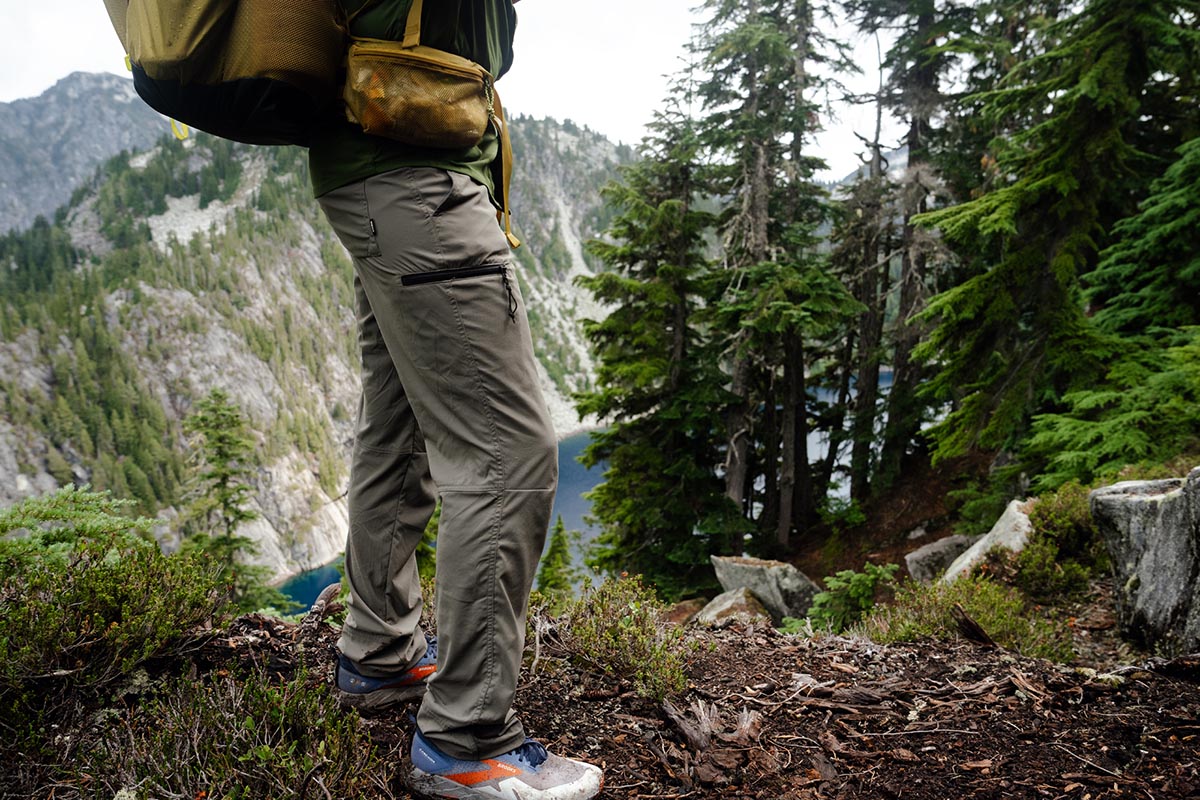
 Materials: 95% nylon, 5% spandex
Materials: 95% nylon, 5% spandex
Weight: 1 lb. 2.5 oz.
Belt included?: No
What we like: A versatile pant with ample storage; holds up well to rough use.
What we don’t: Slightly baggy fit, expensive, and a bit heavy; not as easy to convert into shorts as the prior version.
Kühl clothing has distinctive styling in general, but it’s the durable fabric and well-sorted zip-off design that won the Renegade Cargo Convertibles a spot on this list. The thoughtful mix of materials and solid construction make the Renegade impressively tough—our pair still looks like new after extensive use—and the generous amount of stretch is a nice upgrade from another popular (but since-discontinued) Kühl hiking pant we’ve tested, the Liberator Convertible. The fit of the Renegades is a little baggy for our tastes, but those who like a relaxed cut should find them perfectly suitable.
As with the Liberator, the Renegade’s convertible design is among the best. We particularly like its low-profile styling that does a decent job disguising the zippers, and the 9.5-inch length of the shorts is a practical choice for hiking and backpacking. Additionally, if you’re the type that likes to carry a number of gadgets in your pockets or will be using the pants for travel, the Renegade's dual zip pockets will be a welcome sight (though heavy items tend to flap around uncomfortably a bit). We have read many reviews complaining about the lack of side leg zippers on the latest Renegade Convertible, meaning you'll most likely have to take your hiking boots off to covert them to shorts. All told, the Renegade won't be for everyone, but the feature-rich build offers a great combo of zip-off versatility, storage, and toughness.
See the Men's Kühl Renegade Convertible

 Materials: 88% nylon, 12% elastane
Materials: 88% nylon, 12% elastane
Weight: 12.5 oz.
Belt included?: Yes
What we like: Tough, mountain-ready build with great stretchiness.
What we don’t: Expensive and runs warm in mild temps.
Outdoor Research’s Ferrosi above is a great match for summer heat, but on a trek through Peru’s Cordillera Huayhuash, we turned to the more serious Arc’teryx Gamma. What sets this softshell pant apart is its fantastic stretchiness, durability, and weight. We wore it all day in the alpine for nine days while hiking, setting up camp, filtering water, cooking, and lounging, and it came home looking like new. Moreover, the Gamma’s high-quality softshell fabric was stretchy enough to layer comfortably over thermal pants in the cold evenings and retained its shape through it all. These were also the pants of choice for another editor's two-week trekking and climbing trip in Nepal. Their versatility as light-but-durable hiking pants with the chops for technical climbing makes them the perfect pick for higher-elevation expeditions with long approaches.
At $200, the Gamma is the most expensive pant on our list. For most 3-season backpacking trips, you can spend significantly less and be just as pleased with the performance. In fact, you’ll likely find the Gamma overkill if temperatures rise, as the burly build can’t match the breathability of a thinner alternative like the OR Ferrosi above or Patagonia Quandary below. All in all, the Gamma lacks the versatility of our top picks, but for alpine adventures or shoulder seasons when you need a step up in toughness and weather protection without adding much weight, it’s a terrific option. And a final note on fit: It’s worth consulting the sizing chart. We ended up going down a size and wound up with a just-right-for-us trim cut.
See the Men's Arc'teryx Gamma See the Women's Arc'teryx Gamma
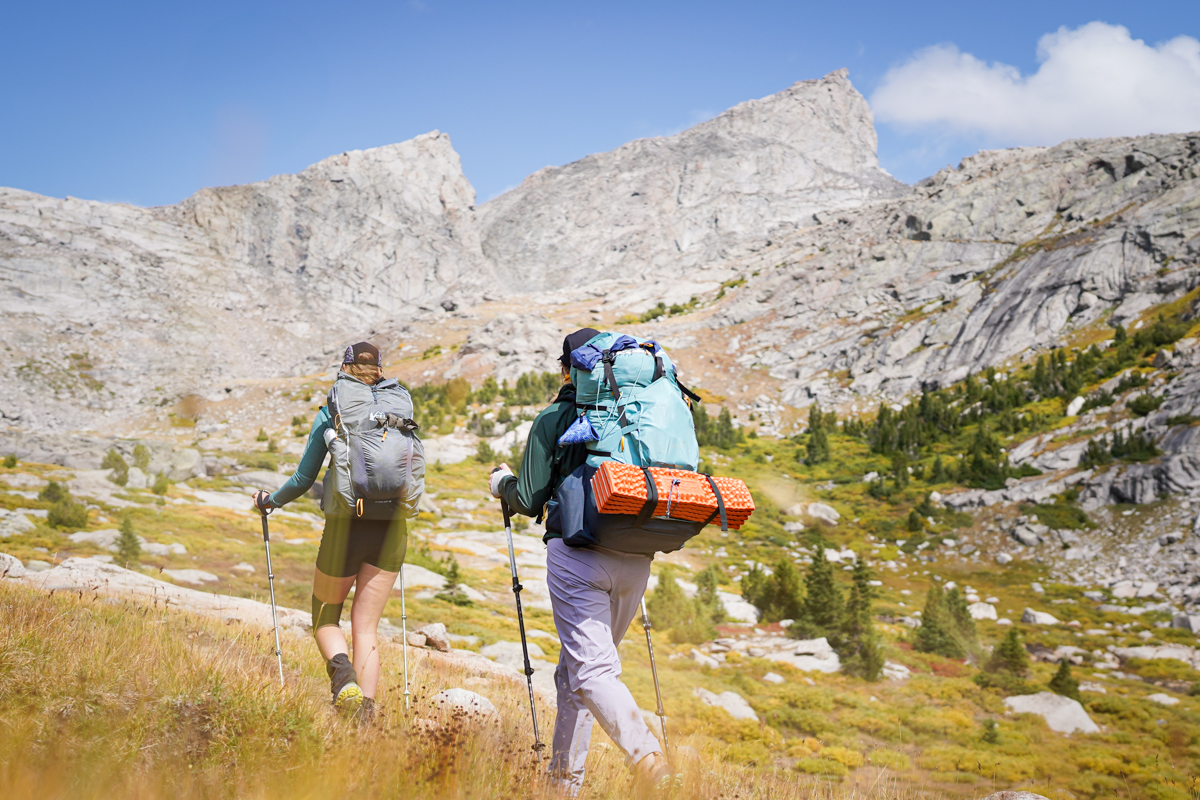
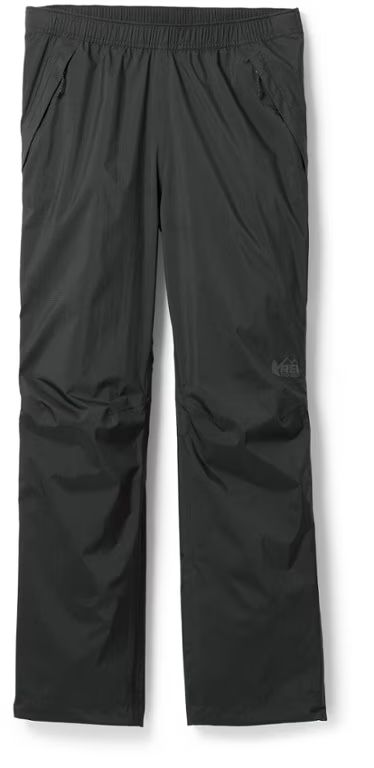 Material: 100% nylon
Material: 100% nylon
Weight: 12.0 oz.
Belt included?: No
What we like: Waterproof and includes full side zips at a good price.
What we don’t: Great for storms but not breathable enough for all-day or active use.
All of the pants above are traditional hiking designs (or a softshell in the case of the Arc’teryx Gamma), but we wanted to include at least one true rain pant. The REI Co-op Rainier—from the same line as the popular rain jacket with the same name—can be worn over your hiking pants when the rain hits or as an outer layer around camp for an extra dose of wind protection and warmth. With a waterproof 2.5-layer HydroWall construction and fully taped seams, these pants will keep you dry when the going gets wet. As a bonus, the full-length side zips make it really easy to slide them on and off over a pair of shoes or boots.
Keep in mind that rain pants are not a replacement for the options above, and they are best used as a supplementary and/or emergency layer in wet and inclement weather. Although relatively comfortable, the Rainier won’t move as well with your body as a stretchy nylon blend (plus, the rigid fabric is more prone to tears). And, of course, the waterproof membrane won’t breathe nearly as well, either. But weighing just 12 ounces, the Rainier is great to have in your pack for multi-day trips or on hiking days with mixed conditions. We also like the fit, which is baggy enough for layering but still works well when you’re on the move. To see how these stack up to other leading models on the market, check out our full round-up of the best rain pants.
See the Men's REI Co-op Rainier See the Women's REI Co-op Rainier
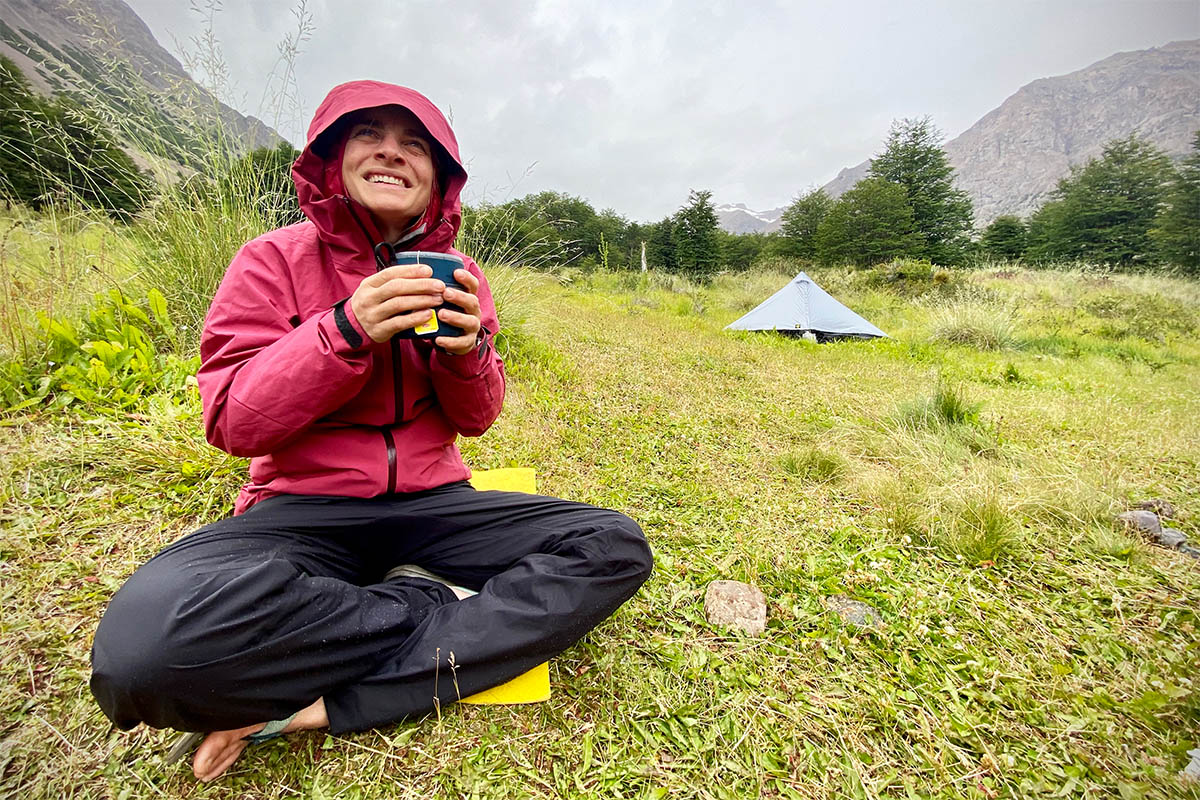
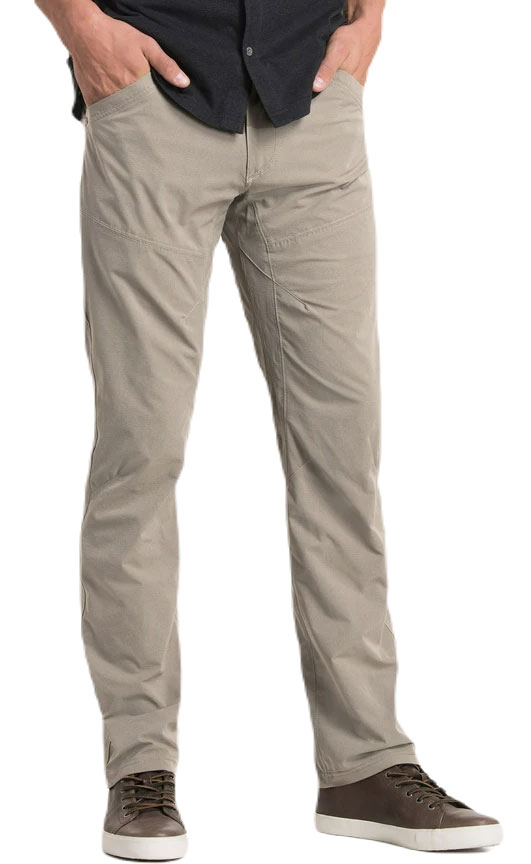 Materials: 100% polyester
Materials: 100% polyester
Weight: 14.4 oz.
Belt included?: No
What we like: Clean crossover design for hiking and daily use.
What we don’t: None of the pockets have closures; does not come in a women's version.
Kühl makes a dizzying array of hiking pant models, and there are more quality options aside from the popular Renegade Convertible above. For something a little different, the sleek Silencr hits the sweet spot between performance and casual wear. The softshell material is tough, comfortable, and resists the elements well thanks to a DWR finish. But the design of these pants is so streamlined and clean that they're easy to also wear around town. It’s true that the Silencr isn’t as mountain-ready as other softshell models like the Arc’teryx Gamma above or Outdoor Research Cirque III below, but we love the crossover appeal.
Our biggest gripe with the Kühl Silencr is that none of the pockets have closures or even clips. With two large, drop-in style side pockets along with four standard pockets on the front and back, the storage options are plentiful, but none allow you to securely stow your electronics or wallet. This isn’t a dealbreaker for us, however, and the Silencr still has a lot going for it in terms of versatility. For a hiking pant that can be worn every day and excels at travel, it’s a nice option.
See the Men's Kühl Silencr
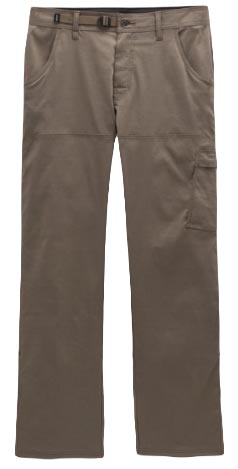 Materials: 97% nylon, 3% spandex
Materials: 97% nylon, 3% spandex
Weight: 13.6 oz.
Belt included?: Yes
What we like: The original Stretch Zion—and its standout comfort, durability, and versatility—has returned.
What we don’t: Breathability can be an issue in hot weather.
It’s back! After a bit of public outcry, Prana has reintroduced the legendary Stretch Zion Pant after their Zion II missed the mark for many users. We are pretty jazzed they brought it back—the original Stretch Zion was our team's all-time favorite design, striking a near-perfect combination of comfort, fit, durability, and on-trail performance. Doubling as a great climbing pant, you get nice range of motion thanks to the stretchy fabric, and we really like the semi-slim cut that provides great mobility. In terms of features, the Stretch Zion has a zippered cargo pocket that fits a smartphone, snaps for rolling up the legs, and a low-profile waistband adjuster to the right of the top button. All told, the Stretch Zion is just about the whole package in a hiking pant and looks good around town, too (much better than most other hiking models). The Stretch Zion's nylon build is a bit more substantial than some other designs on this list, almost resembling a lightweight softshell. This added thickness makes the pants run a little warm during summer hiking and backpacking.
On the flip side, the shell fabric is durable and can handle a range of weather conditions—we’ve even worn them snowshoeing. For a thinner and more breathable option (albeit with less casual appeal), see the Outdoor Research Ferrosi above. Finally, while we're grateful that Prana brought the beloved Stretch Zion back, it's important to note that the latest design is a little different than the original. Specifically, the metal button of old has been replaced with a plastic one, and there are numerous reports of decreased durability and a less flattering fit. We were finally able to properly test the latest design on a trip through the Wind River Range in Wyoming. We came away with mixed feelings. While we appreciate the return to the Zion's original fabric, the fit feels quite different, and they have a flaring—almost bell bottom—boot cut to them that swishes around while hiking. Though some who trek with clunky hiking boots may appreciate this, we prefer a more slim fit on the trail. Couple this with the lack of a metal button and reported decreased durability, and we just aren't as pleased with the revamp as we thought we'd be. We still think it deserves a spot on this list but have slotted it a good deal lower than before.
See the Men's Prana Stretch Zion See the Women's Prana Halle
 Materials: 95% nylon, 5% spandex
Materials: 95% nylon, 5% spandex
Weight: 10.9 oz.
Belt included?: No
What we like: Well-built and good-looking crossover hiking and travel pants.
What we don’t: Thin build is best only in the summer months.
Billed as a lightweight hiking and travel pant, the Patagonia Quandary balances performance and casual needs. We’ve found it checks all the important boxes: clean styling, articulated knees, gusseted crotch, and a tough but light fabric with a DWR coating and 50+ UPF rating for sun protection. Further, Patagonia leads the charge in sustainable measures: The Quandary’s nylon is 65% recycled, and the fabric is bluesign-approved, which means the fabrics are sourced from and made with sustainable materials.
In many ways, the Quandary is a lighter and simpler alternative to the Prana Stretch Zion above. Both offer good stretch and an athletic fit that pleases hikers and urban explorers alike, but we prefer the belt adjustment on the Prana to the Quandary's internal drawcords. And for those who prioritize pockets and organization, the Stretch Zion gets the clear edge. Finally, although the Patagonia's 2.7-ounce weight savings and streamlined design may appeal to warm-weather backpackers, we still favor the more versatile and tougher Stretch Zion for most uses.
See the Men's Patagonia Quandary See the Women's Patagonia Quandary
 Materials: 88% nylon, 12% elastane
Materials: 88% nylon, 12% elastane
Weight: 12.0 oz.
Belt included?: No
What we like: Lightweight and packable; durable; comfortable tapered fit.
What we don’t: A bit too tight in certain areas; multiple zippers add bulk.
Rab clothing has quickly taken over our wardrobe—and for good reason. Most Rab goodies we test are incredibly durable, functional, streamlined, and look fashionable to boot. The Incline pant is no exception. In line with other Euro brands, Rab pants tend to have a slim, tapered fit, which isn't for everybody, but we love them for all sorts of outdoor uses—from long treks to dynamic rock climbs. These follow suit, but articulated knees and just the right amount of elastane baked into the stretch nylon fabric means the Incline boasts stellar mobility and comfort in the backcountry. We recently put this pant through the wringer on a long backpacking trip through Wyoming's Wind River Range, and it held its own on sharp granite scrambles and light off-trail bushwhacks. Despite the low scale reading and stellar packability, our pair—which we've had for almost two years now—are still going strong with only minimal picks and tears. These have become one of our favorites.
So why the lower position in this round-up? While we personally love the Incline's slim fit and low profile, this can be a polarizing look and feel for many on the trail. Some have expressed that the tight fit limits airflow and is restricting when tackling technical terrain. Additionally, while we appreciate zippers on every pocket for certain occasions (like rock climbing), they can be a bit annoying when hiking. They also add weight and bulk. Finally, we aren't fans of the tiny two-button design. The buttons are so small that we often spend a lot of time fiddling with them every time we slide the pants on or off, and they can feel uncomfortable when pressed under a backpack hipbelt. They also have opened on us a couple of times mid-hike. These gripes aside, we still grab the Incline pant for way more trips than we anticipated given the affordable price tag and unassuming specs.
See the Men's Rab Incline See the Women's Rab Incline
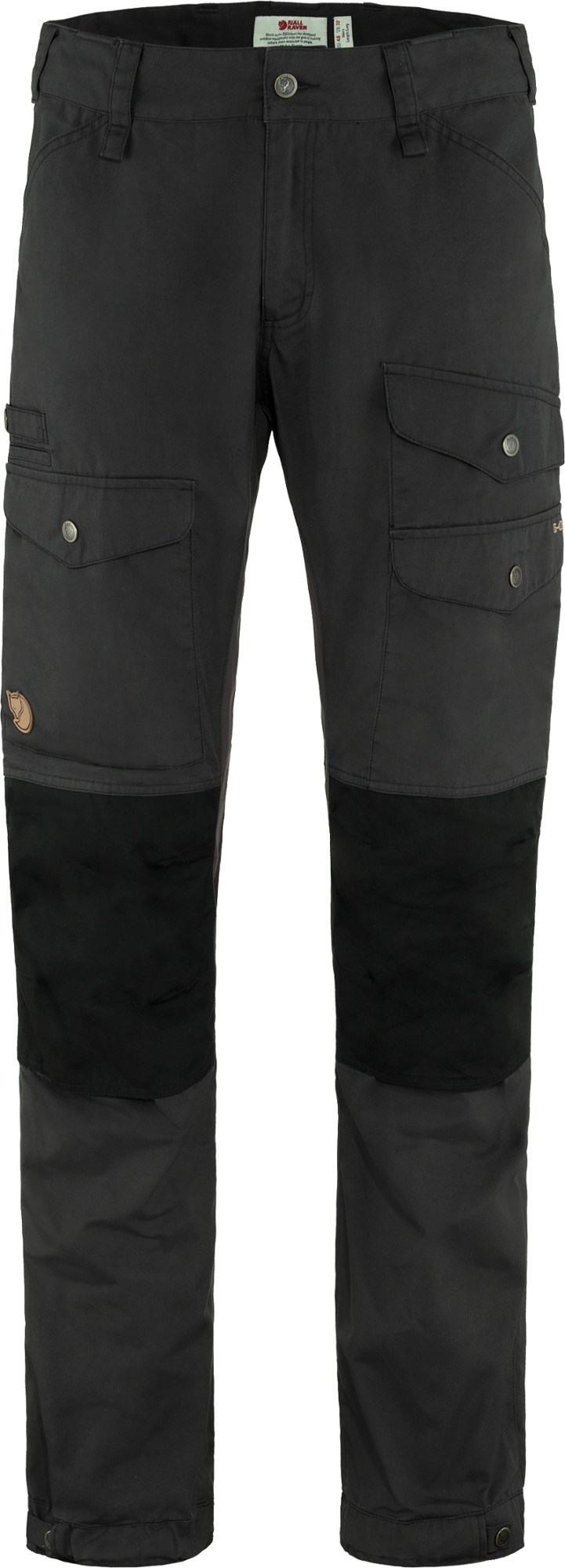 Materials: 65% polyester, 35% cotton
Materials: 65% polyester, 35% cotton
Weight: 1 lb. 3.7 oz.
Belt included?: No
What we like: Classic Fjallraven build that's tough, durable, and now more breathable.
What we don’t: Thick and not ideal for covering long distances.
It’s rare in 2025 to see hiking pants made with cotton—or any outdoor gear for that matter—but the Vidda Pro from Swedish company Fjallraven is a different breed. This pant is made from Fjallraven’s tough 35% cotton G-1000 material, which is heavier than most other options on this list, and we all know that it doesn’t exactly shine in terms of water resistance (for waterproofing, Fjallraven recommends applying their environmentally friendly wax for added protection). On the flip side, the thickness of the G-1000 fabric allows you to move through brush and slide over rocks without worrying about tears. Simply put, the toughness and durability can’t be beat.
It’s worth noting that we’ve included the Vidda Pro Ventilated version here. This design takes the original and adds side zips between the thigh and knee for dumping heat, along with stretch fabric on the insides of the legs for better mobility. Both are positive changes in our opinion and make the pant more versatile. We still don’t love the Vidda Pro Ventilated for hikers and backpackers covering a lot of ground, but for off-trail jaunts (think fishing and hunting) or extra warmth and protection around camp, it’s an interesting option. For a lighter version without the venting, check out their Vidda Pro Lite ($155).
See the Men's Vidda Pro Ventilated See the Women's Vidda Pro Ventilated
 Materials: 100% nylon, polyester mesh panels
Materials: 100% nylon, polyester mesh panels
Belt included?: Yes
What we like: Great value and lots of pockets; breathes well in the heat.
What we don’t: Thin materials aren't very durable; all-nylon build lacks stretch.
For casual hiking and even summer backpacking, the Columbia Silver Ridge is a great value in a hiking pant. Offered at a reasonable $60 and often available for considerably less, these pants perform well with breathable and quick-drying fabrics (this also makes them popular among travelers). Storage isn’t lacking either, including easily accessible hand pockets, three massive cargo pockets (two at the back and one on the right leg), and a zippered security pocket on the left thigh. All in all, we’ve been pleasantly surprised with the performance and comfort of these pants, and the generous storage layout is the cherry on top.
What are the shortcomings of the Columbia Silver Ridge? Despite being reasonably well built for the price, the materials feel relatively thin and don’t provide as much weather protection as some of the pricier options on this list. In addition, the zippers certainly aren’t the smoothest we tested, and the cheaper materials lack stretch and won’t hold up as well as the more premium designs here (including REI's $10-pricier Trailmade above). But it’s hard to argue with the price or vast color and size options, which is why we’ve included the Silver Ridge here. And for those looking for zip-off capabilities, the men's pant is also also offered in a convertible version for $5 more. For a comparable women's model, check out the Silver Ridge Utility Convertible Pant, which features a zip-off design but is otherwise largely similar.
See the Men's Columbia Silver Ridge Cargo
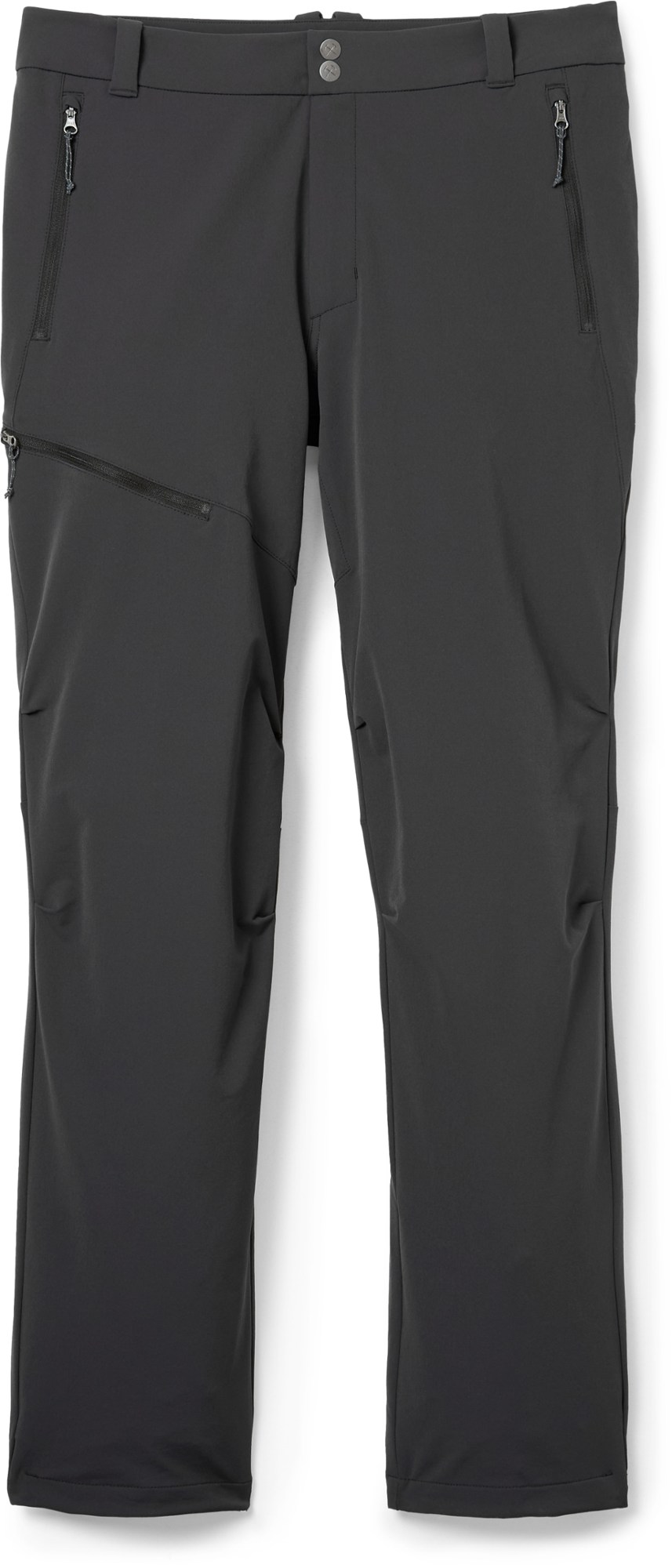 Materials: 63% nylon, 26% polyester, 11% spandex
Materials: 63% nylon, 26% polyester, 11% spandex
Weight: 15.1 oz.
Belt included?: No
What we like: Softshell build is very durable; reasonable price.
What we don’t: Not ideal for hot conditions.
Most hikers head straight for a lightweight nylon pant, which is the makeup of many of our choices above, but we can tell you firsthand that a burlier softshell is underrated. Here’s the story: The REI Activator feels thicker than a true summer pant and weighs a bit more than popular models like the OR Ferrosi, but you get more for it. The softshell fabric is noticeably burlier yet still supremely comfortable, and we’ve worn multiple generations of this line from start to finish on long trail days. It’s tough and helps block out those sharp branches you walk by, handles camp with ease (both in sitting on rough ground and providing a boost in warmth), is water- and wind-resistant, and hikes as well as any pant on this list.
The biggest concern with a softshell pant like the REI Activator is that it will run warm. In practice, we’ve taken this pant on hikes up to 60 degrees Fahrenheit and have not experienced any overheating, which is a pleasant surprise. We wouldn’t bring the Activator on a true summer or desert hike in hot conditions, but it’s a nice three-season pant that can take you all the way down to near-freezing. All in all, we can’t help but love the versatility and performance boost of the Activator, which has made it one of our go-to trekking pants. Note: We don't have any experience with the newest iteration of the Activator pants, but they are largely similar to the previous model we tested. We will be sure to update this review once we get some experience with the latest update.
See the Men's REI Co-op Activator See the Women's REI Co-op Activator
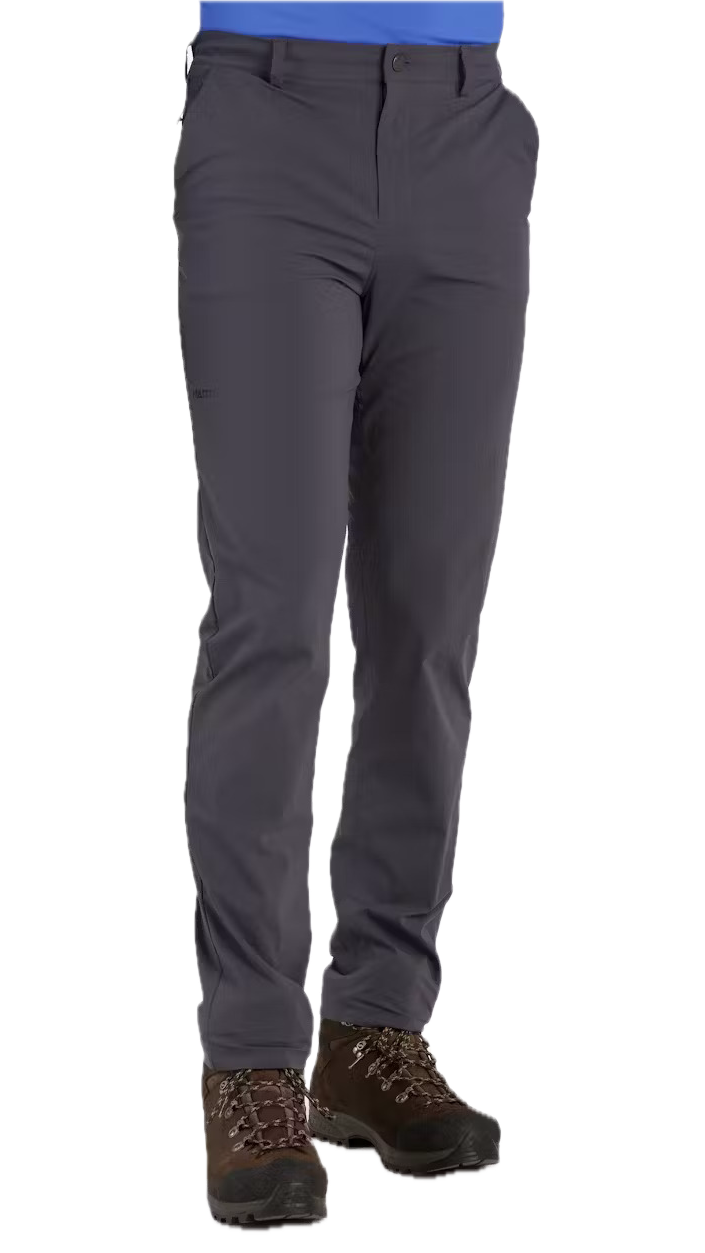 Materials: 94% nylon, 6% elastane
Materials: 94% nylon, 6% elastane
Weight: 9.0 oz.
Belt included?: No
What we like: Great in warm temps and a good value.
What we don’t: We prefer the trimmer fit of the Ferrosi above.
For hiking in hot weather, the Marmot Arch Rock offers impressive temperature regulation at a decent price. For $10 to $20 less than the competition, the Marmot has a full suite of features like articulated knees, a water-repellent finish, and zippered front hand pockets. It’s also among the lightest hiking pants on our list at just 9 ounces but managed to hold up well while hiking and scrambling in Utah’s canyon country. In temperatures topping 80 degrees Fahrenheit, this pant kept us nearly as comfortable as Arc’teryx's premium Gamma Lightweight. The Arch Rock has also been updated recently, bringing back the belt loops that folks missed in the last iteration.
Despite good performance in hot weather at a value price, we have the Arch Rock midpack on our list because it isn’t as versatile as the competition. The pant is too thin for true three-season use and noticeably less stretchy than the popular Outdoor Research Ferrosi. Additionally, user feedback has been very divisive through the last two versions of the Arch Rock. And for those that land in between sizes (like our 31-inch-waisted tester), you may have a hard time getting an ideal fit (the 30 was snug, while the 32 required a belt). Still, the Arch Rock lines up really nicely for those looking for a highly breathable design. We'll report back with more information after we spend some time wearing the newest version.
See the Men's Marmot Arch Rock See the Women's Marmot Arch Rock
 Materials: 86% polyester, 14% spandex
Materials: 86% polyester, 14% spandex
Weight: 11.1 oz.
Belt included?: No
What we like: Very stretchy and durable build with zippered storage for all five pockets.
What we don’t: Thick fabric is too hot for summer-time temps.
A semi-recent addition to Patagonia’s hiking pant line, the Terravia Trail (previously known as the Altvia Trail) combines a durable yet stretchy build with a very functional storage layout. Starting with the stretch, this slim-fitting pant includes a healthy dose of spandex (14%) for excellent mobility and all-around comfort. They’ve even incorporated elastic into the waistband to give it a jogger-like fit and feel. That said, the Terravia is still sufficiently trail-ready with a highly durable and abrasion-resistant exterior, DWR coating for shedding light moisture, and zippered closures on five pockets. And with zippers at the bottom of the cuffs and a small metal hook to secure to your laces, the lower legs of the pant can be tuned to fit over anything from low-profile trail runners to bulky hiking boots.
What’s not to like with the Terravia Trail Pant? For one, the sheer number of zippers in the design has us concerned about its long-term durability (and we’ve unfortunately had a number of Patagonia zippers fail on us in the past). Further, the fabric is among the thickest on this list, and we found it ran hot when backpacking in temperatures above about 70 degrees Fahrenheit. Finally, the 31-inch inseam is a polarizing choice: Most pants either offer a standard 32-inch inseam or a 30-inch option, so this in-between length may not work for some folks. But if the sizing is good for you—it was spot-on for our tester—and you like the security of zippered storage, the stretchy and comfortable Terravia has plenty of appeal.
See the Men's Patagonia Terravia Trail
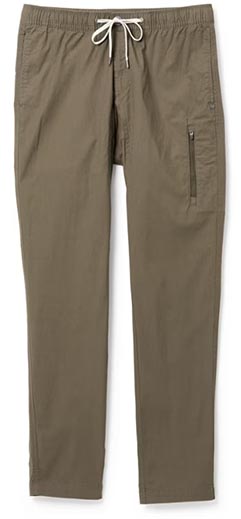 Materials: 98% cotton, 2% elastane
Materials: 98% cotton, 2% elastane
Belt included?: No (drawstring)
What we like: Tough, comfortable, and one of the most stylish options here.
What we don’t: Cotton-heavy build limits the pants’ backcountry appeal.
Athleisure brand Vuori is a relative newcomer to the outdoor scene, but many folks love their products’ balance of fashion and function. True to form, their Ripstop Pant here is easily one of the most stylish options on the market, combining super durable materials and practical storage in a modern and good-looking package. In a departure from standard nylon and polyester constructions, the Ripstop’s cotton-heavy build does limit its backcountry appeal—we don’t advise bringing the pants along on multi-day outings into the wilderness or into unpredictable weather (Colorado’s notorious mid-day thunderstorms, for instance). But the Ripstop excels as a summer day hiker and looks right at home at après, which is a winning combination for many.
Comfort is another highlight of the Vuori Ripstop’s design (and many cotton pants in general). It can’t match the mobility of performance options like the Patagonia Quandary, Prana Stretch Zion, or Outdoor Research Ferrosi above, but the touch of elastane (2%) and gusseted crotch offer enough give for most activities. We also found the unique waistband design—including an exterior drawstring and elastic along the perimeter—to be very functional for dialing in fit. The biggest deterrent for many will be the lack of performance chops: Cotton doesn’t breathe all that well and holds onto moisture when wet, which is a bad combination for high exertion and warmer temperatures. But the Ripstop Pant has its place as a casual option that can hold its own on easy to moderate day hikes, and we certainly appreciate the toughness and confidence-inspiring build quality.
See the Men's Vuori Ripstop See the Women's Vuori Ripstop
 Materials: 96% nylon, 4% spandex
Materials: 96% nylon, 4% spandex
Belt included?: No
What we like: Available in a wide range of sizes; easy-to-remove legs.
What we don’t: Strange fit and no integrated belt.
REI Co-op has an interesting history with hiking pants and the lineup frequently changes. We really liked the Screeline in years past, but that model has been discontinued. And the REI Activator is a very solid softshell option, but it’s not a traditional hiking pant for warm spring and summer conditions. The Co-op’s biggest seller is the Sahara, which is an attractively priced convertible pant at $90 but has its fair share of shortcomings, which is why it’s included so far down this list.
What are our concerns with the latest Sahara Convertible? Past versions were on the normal to baggy end of the spectrum, but REI went in the other direction here with a regular fit and a flared bottom (making the leg prone to swishing on the trail). Additionally, the pant no longer includes an integrated belt, which is a feature that we really appreciate. Finally, the belt loops are surprisingly small and only work with narrow designs (roughly 1.25 in.). Taken together, the Sahara certainly aren’t the worst hiking pants out there, but we prefer the convertible options from Columbia and Kühl above.
See the Men's REI Sahara Convertible See the Women's REI Sahara Convertible
 Materials: 50% nylon, 43% polyester, 7% spandex
Materials: 50% nylon, 43% polyester, 7% spandex
Weight: 1 lb. 8.7 oz.
Belt included?: No
What we like: Alpine-ready build that's super tough and water-resistant.
What we don’t: Heavy and overkill for most conditions; expensive.
Without intending to open a new can of worms, certain types of cold-weather hiking and bushwhacking beckon a more serious pant than the options above. For this reason, we’ve added a technical softshell to this list: the Cirque III from Outdoor Research. This pant offers an impressive mix of protection from the elements and excellent mobility: It’s water-resistant, breathable, and tough enough for off-trail adventuring that might tear some of the lighter-weight pants to shreds (the face fabric of the Cirque III is a burly 90D). For hiking, the double-weave stretch fabric allows for a much better range of movement and breathability than you get with a rain pant or hardshell.
Keep in mind that the Cirque III is a specialty pant. It’s listed as being ideal for “high-energy alpine climbing, mountaineering, and ice climbing,” so it’s clearly built with alpine conditions in mind. The pant is water-resistant but not waterproof, meaning that it will eventually soak through in sustained rainfall or wet snow. And at over 1.5 pounds for the pair, it weighs roughly double most lightweight hiking pants on this list. But for fall, winter, and spring hiking in nasty or off-trail conditions, the Cirque can be your bomber hiking pant. It doubles up well for snowshoeing and spring skiing, too.
See the Men's Outdoor Research Cirque III See the Women's Outdoor Research Cirque III
| Pant | Price | Materials | Weight | Convertible? | Belt? |
|---|---|---|---|---|---|
| Outdoor Research Ferrosi | $99 | 86% nylon, 14% elastane | 12.7 oz. | No (available) | No |
| REI Co-op Trailmade | $70 | 94% nylon, 6% spandex | 11.6 oz. | No | No |
| Kühl Renegade Convertible | $139 | 95% nylon, 5% spandex | 1 lb. 2.5 oz. | Yes | No |
| Arc'teryx Gamma | $200 | 88% nylon, 12% elastane | 12.5 oz. | No | Yes |
| REI Co-op Rainier | $100 | 100% nylon | 12.0 oz. | No | No |
| Kühl Silencr | $99 | 100% polyester | 14.4 oz. | No | No |
| Prana Stretch Zion | $95 | 97% nylon, 3% spandex | 13.6 oz. | No | Yes |
| Patagonia Quandary | $99 | 95% nylon, 5% spandex | 10.9 oz. | No | No |
| Rab Incline Pants | $115 | 88% nylon, 12% elastane | 12.0 oz. | No | No |
| Fjallraven Vidda Pro | $180 | 65% polyester, 35% cotton | 1 lb. 3.7 oz. | No | No |
| Columbia Silver Ridge | $60 | 100% nylon | Unavail. | No (available) | Yes |
| REI Co-op Activator | $100 | 63% nylon, 26% polyester, 11% spandex | 15.1 oz. | No | No |
| Marmot Arch Rock | $85 | 94% nylon, 6% elastane | 9.0 oz. | No | No |
| Patagonia Terravia Trail | $129 | 86% polyester, 14% spandex | 11.1 oz. | No | No |
| Vuori Ripstop Pant | $98 | 98% cotton, 2% elastane | Unavail. | No | No |
| REI Sahara Convertible | $90 | 96% nylon, 4% spandex | Unavail. | Yes | No |
| OR Cirque III | $179 | 50% nylon, 43% polyester, 7% spandex | 1 lb. 8.7 oz. | No | No |
From casual weekend treks to full-blown thru-hikes across the country, the Switchback Travel team is no stranger to long days on the trail in all manner of hiking pants. We've taken a vast variety of pants on expeditions in the Himalaya, long slogs across the African savannah, and countless other hiking trips to narrow in on the streamlined selection of 17 models above. We know the importance of well-fitting pants for all-day comfort in the backcountry, and you won't find us trotting around in just any trousers. Former editor-in-chief John Ellings compiled our initial selection of 13 models back in 2015. An avid backpacker and explorer, John honed in on his top picks over countless miles in the Pacific Northwest and far-flung international locations alike. Senior editor Chris Carter took over the guide in 2024. A seasoned thru-hiker, Chris has completed the Triple Crown of long trails in the U.S. (AT, PCT, and CDT) and continues to backpack around the world.
We meticulously tested countless top-rated hiking pants, drawing from personal experiences as well as feedback from seasoned contributors and the hiking community as a whole, and focused on key factors when making our decisions. Weight, mobility, durability, and fit are all primary considerations when giving any of the 17 pants above real estate in this round-up. Each pair had to stand out in several—if not all—categories to merit our attention. Finally, we know the competition for the hiking pants podium is fierce and constantly evolving, which is why we slot this guide into an iterative update schedule to stay on top of current trends and new designs. We add standouts to our list along the way and ensure our existing reviews stay up-to-date. Whether you're a dedicated weekend warrior getting after it on local trails or a thru-hiker spending months in the same pair of grungy pants, there's an option above that fits the bill.

Hiking pants typically are made of a nylon blend, and most of the options here have at least a small amount of built-in stretch via spandex (elastane). A higher percentage of spandex will result in a stretchier feel, which can be especially nice for those who tend to size their pants on the tight side. The added give in the material also can be a real boon on the trail, and even more so when it comes to setting up a tent and moving around camp. The Outdoor Research Ferrosi and Patagonia Terravia Trail are two of the stretchiest hiking pants available (86% nylon and 14% spandex), while the Fjallraven Vidda Pro Ventilated are all polyester and cotton and have no added give.
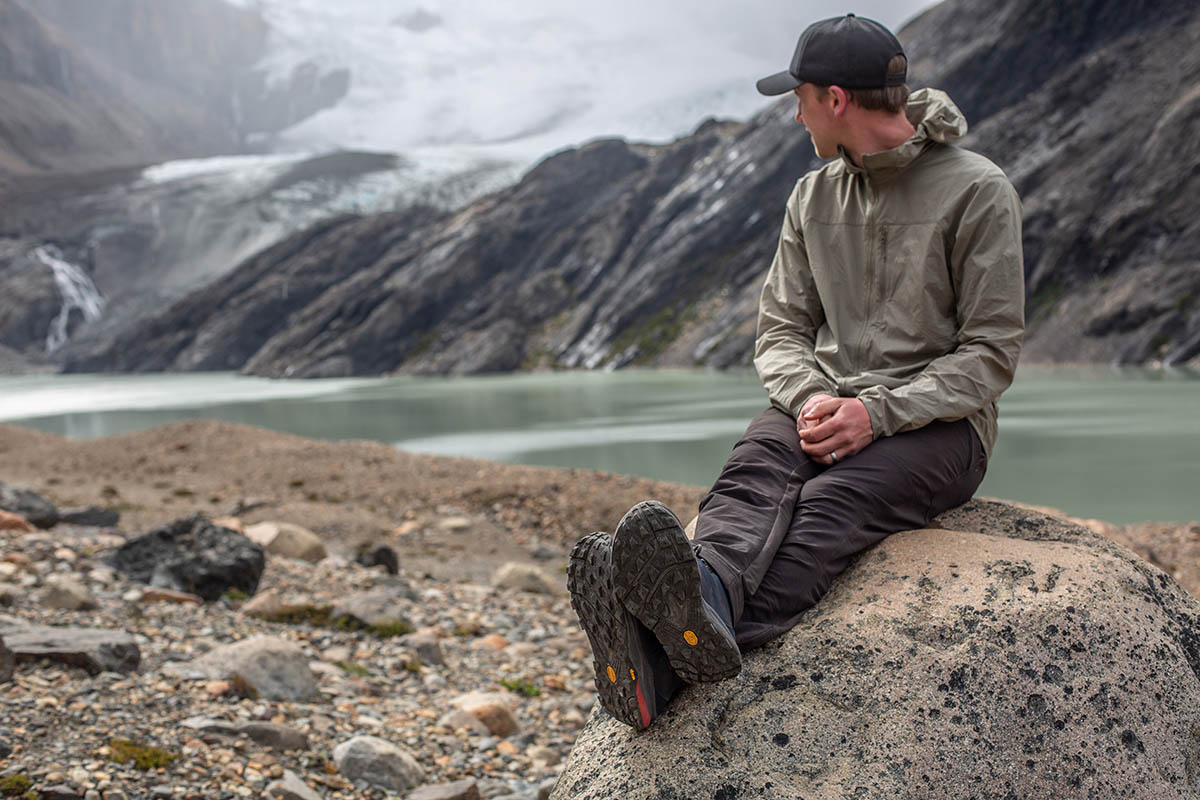
In addition to nylon hiking pants, there are a few softshell pants on this list, such as the Arc’teryx Gamma and Outdoor Research Cirque III. These essentially are tougher and more weather-resistant pants that are ideal for alpine conditions, cooler weather, precipitation, and bushwhacking. For truly wet weather, however, it might be worth opting for a fully waterproof model like the REI Co-op Rainier, which is a rain pant that will keep you dry but lacks breathability for extended treks.
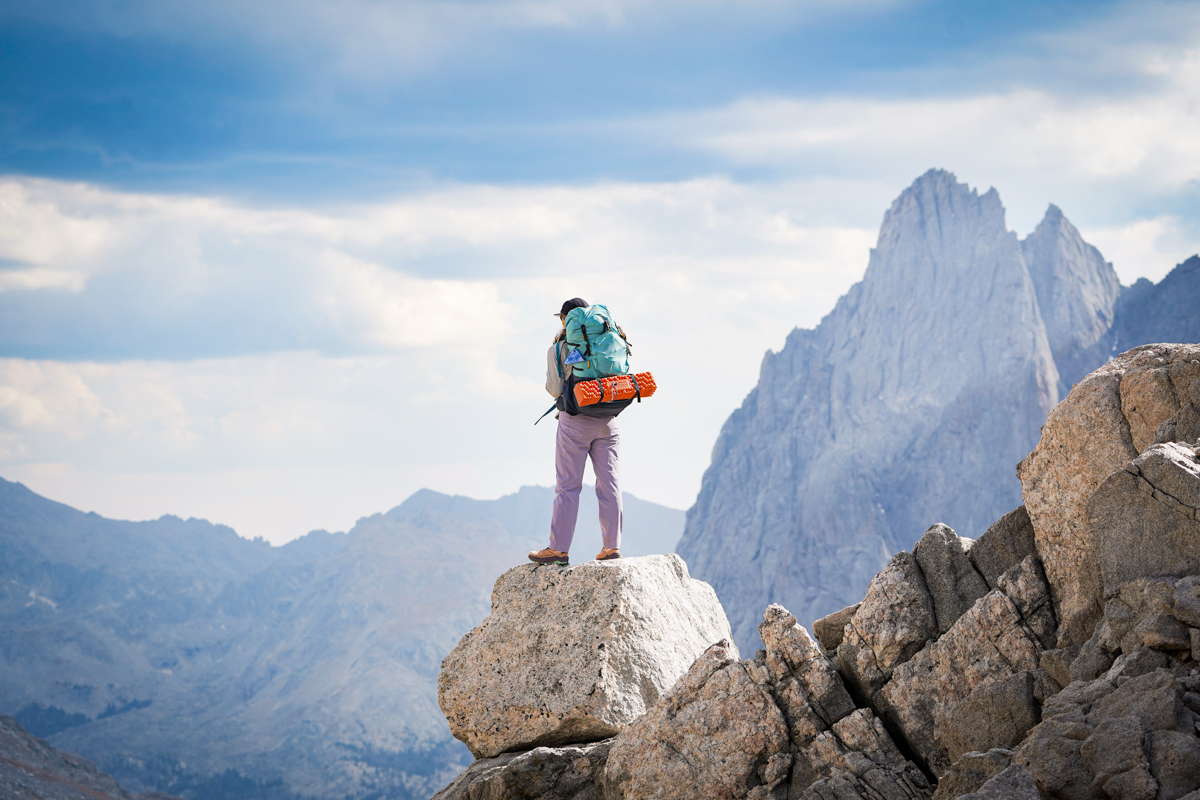
Unlike other types of outdoor gear, for most hikers, the exact weight of their pants isn’t a top consideration (after all, you're not usually carrying them on your back). We’ve worn pairs ranging from 8 ounces to well over a pound on everything from day hikes to multi-day treks, and it's only the rare pair that felt a little heavy on the trail. However, if you will be carrying pants in your backpack, lightweight and packable designs like the Outdoor Research Ferrosi (12.7 oz.) and Patagonia Quandary (10.9 oz.) are great options. On the other end of the spectrum, for high-alpine adventures when you need added weather protection and durability, taking on extra weight for a pant like the 1-pound-8.7-ounce Outdoor Research Cirque III may be worth it.
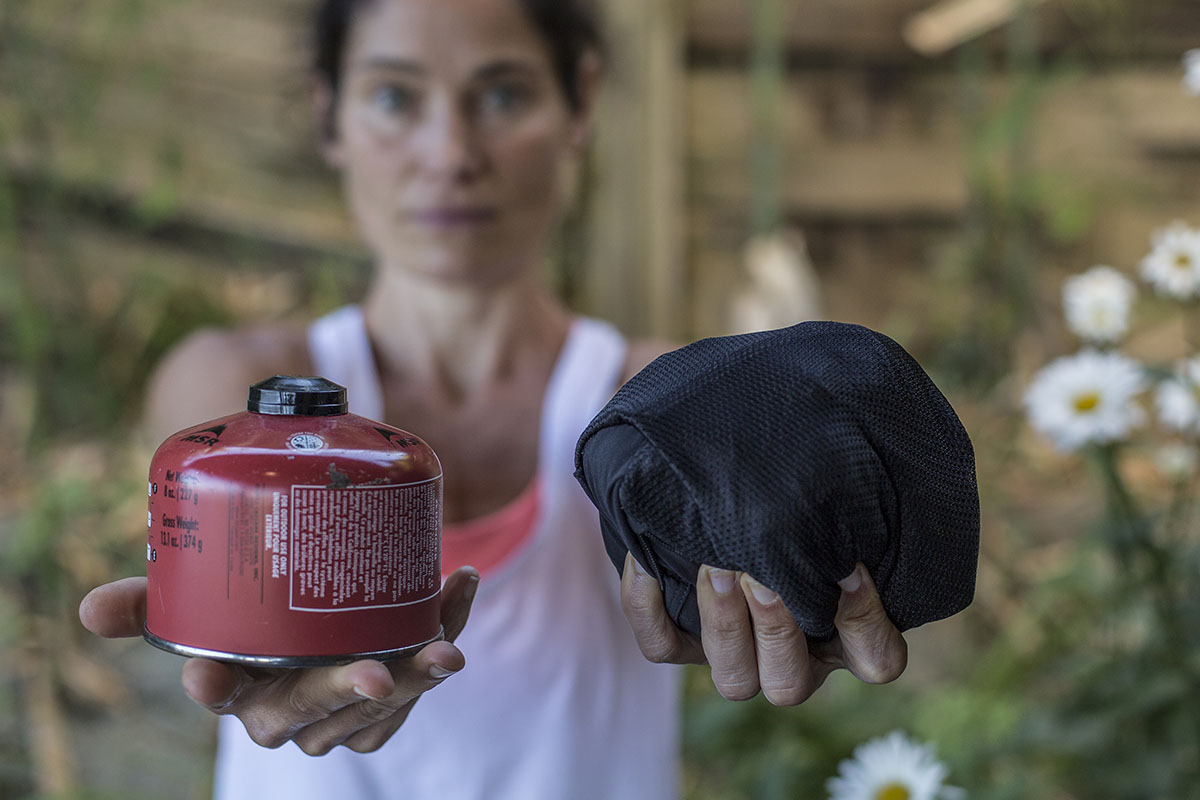
Pockets aren’t for everyone—we often prefer not to overload our hiking pants with excess bulk—but organization can be a plus for some. Hiking pants will typically offer a few of good storage options in the form of a cargo pocket or two. One standout in our group is the Kühl Renegade Convertible. These pants have creative storage options with large zippered thigh and compartment-style pockets. The various sizes mean you should be able to find a spot for just about anything you decide to throw in. But if you’re like us, a simpler design like the single side pocket you get with the Prana Stretch Zion or REI Trailmade is plenty.
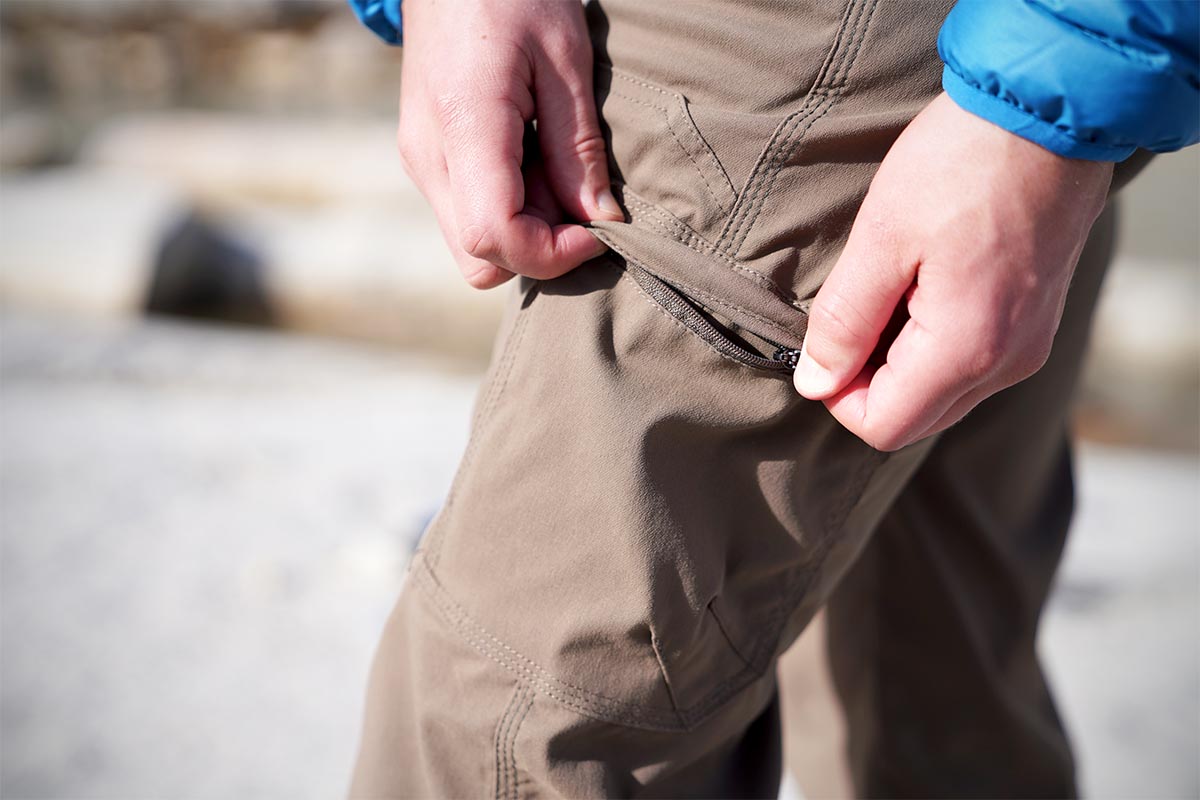
Two wonderful design features to look out for in your hiking pant search are articulated knees and gussets built into the crotch of the pants. Articulated knees mimic a person’s walking motion by creating a natural bend in the knee area of the pants. In contrast to a traditional, straight-legged pant, the improved range of motion is immediately apparent. A gusset is a patch of diamond-shaped fabric that runs along the inner thigh of the pants, replacing a standard seam. As with an articulated knee design, the extra fabric improves range of motion and general fit and comfort.
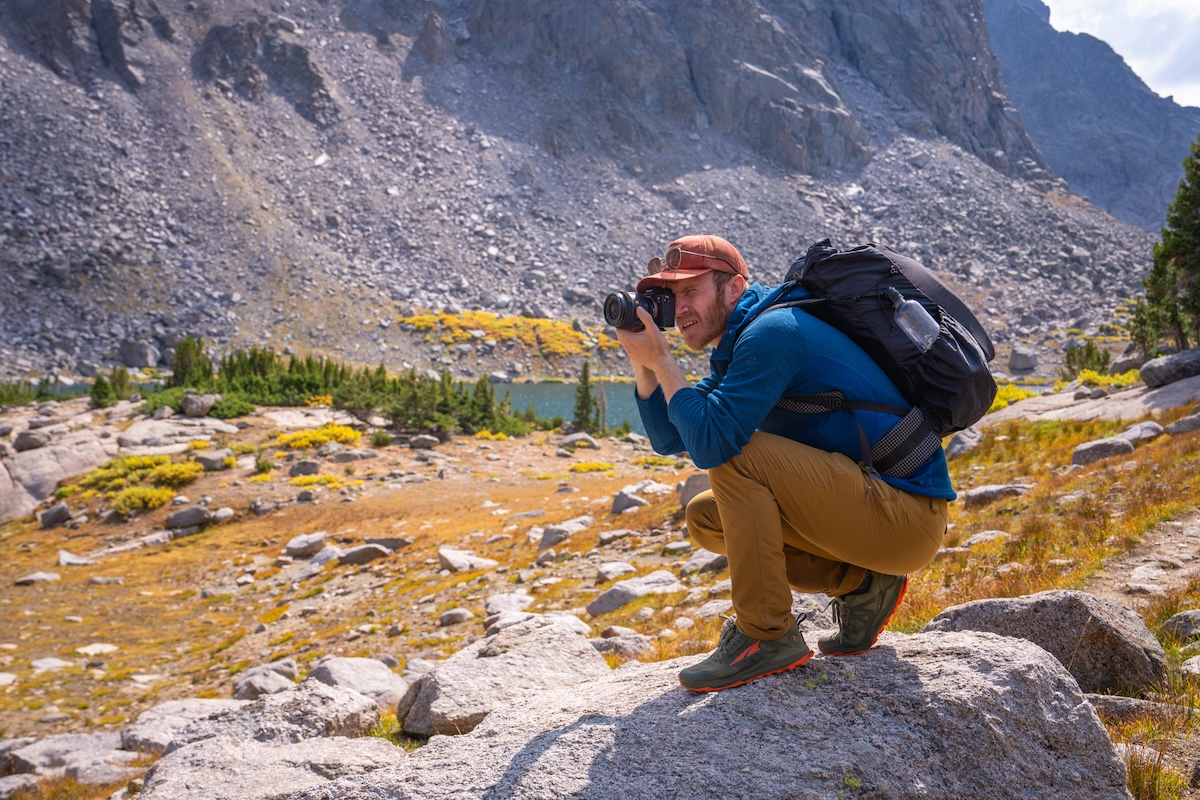
Originally popular with rock climbers who required a good fit to perform at peak levels, these features have trickled down nicely into the hiking pant world. There are extra costs associated with the greater complexity of constructing these types of pants, so hikers heading out for short day trips on well-maintained trails with flatter grades or those on a budget can probably go without. But the very tangible benefits can be enjoyed by just about everyone, so we highly recommend stretching your budget and choosing pants that include both articulated knees and gussets. It just makes for a more comfortable wear.
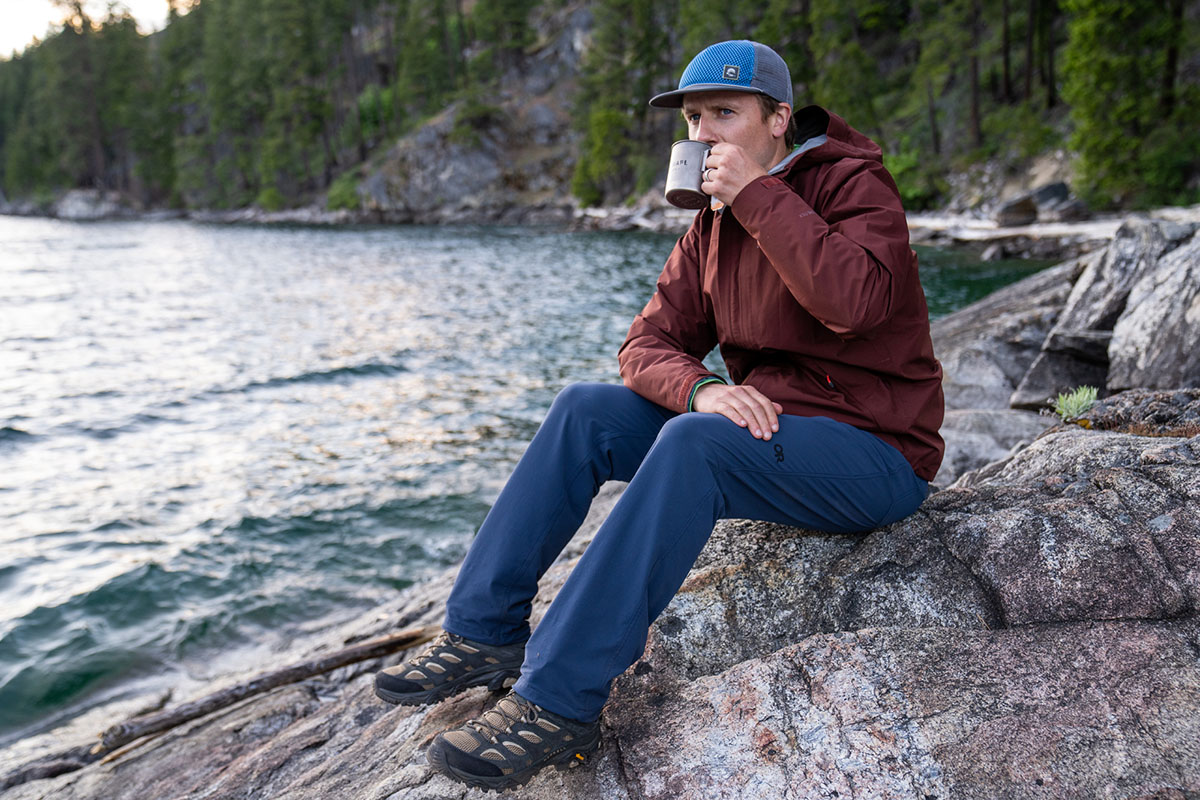
Dialing in fit can often be a difficult thing, so those who fall in between sizes (like several members of our team) really appreciate a waistband with a little adjustability. Enter the integrated belt. One of our favorites comes with the Prana Stretch Zion—its low-profile, small adjuster is made out of webbing and resembles a shortened belt. The downside of an integrated belt, particularly one that wraps all the way around your waist, is the extra bulk, which can potentially interfere with a backpack’s hipbelt. A more minimalist alternative is a pant with a drawstring closure along the inside of the waistband (Patagonia’s Quandary and OR’s Ferrosi have this), although we’ve found them to be less user-friendly (it’s hard to make quick adjustments) and less functional overall than a belt-like design. Unfortunately, it's very common for the women's version of many of these pants to not have a belt, even if the men's does.
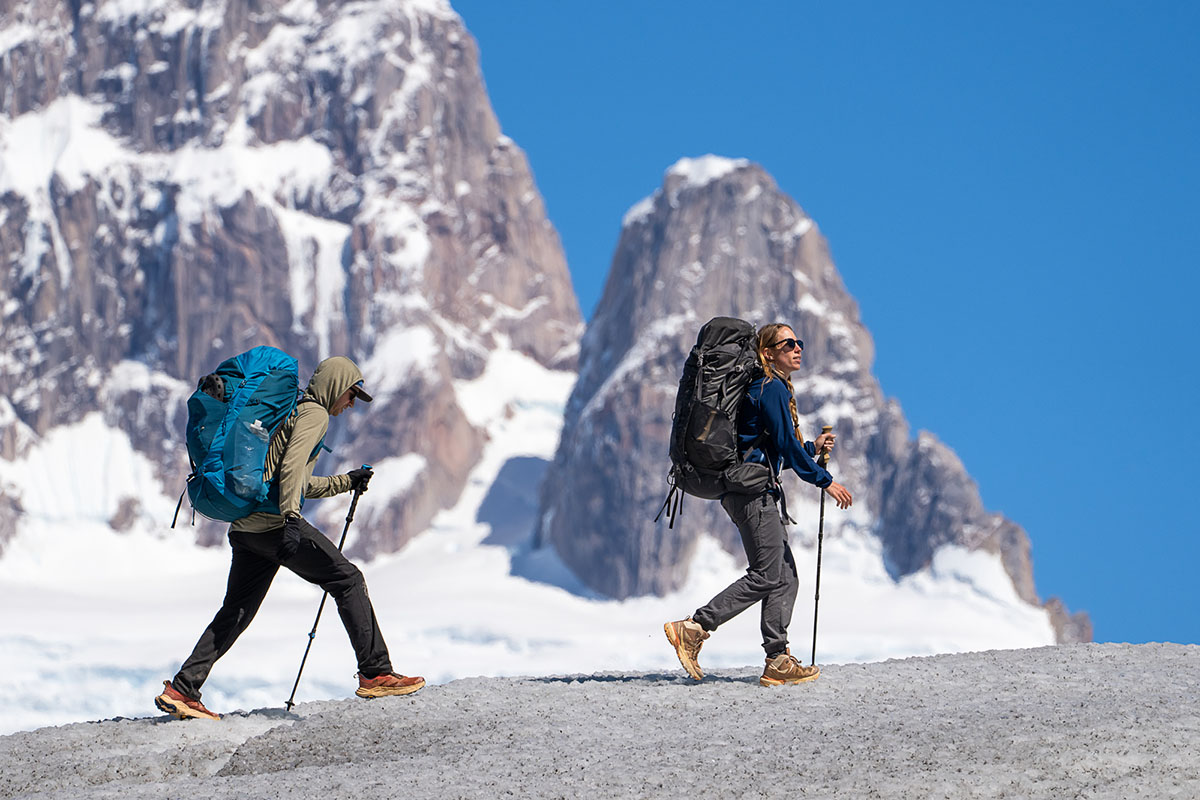
No hiking pant that you’d want to bring along on a summer backpacking trip will be truly waterproof. The reasons for that are the same reason you don’t often find yourself hiking in a fully waterproof jacket unless it’s actually raining: They just don’t breathe as well. So how good are hiking pants when the rain starts to fall? Depending on the model, they can actually be pretty decent performers. As a result, we often prefer to keep our hiking pants on rather than swapping out for a rain pant (like the REI Co-op Rainier), even in a rain shower.

Most hiking pants shed light rain pretty well, thanks to a durable water repellent coating (you’ll often see it listed as DWR), which makes the droplets bead up and roll off. And, as long as you avoid a more casual cotton construction, the nylon blends aren’t very prone to soaking up moisture. If and when they eventually soak through, drying time isn’t too shabby either—particularly among thin designs like the OR Ferrosi and REI Trailmade—reason enough for us to recommend sticking to hiking pants in all but the most extreme rainy days (and this is coming from a group of Seattleites).
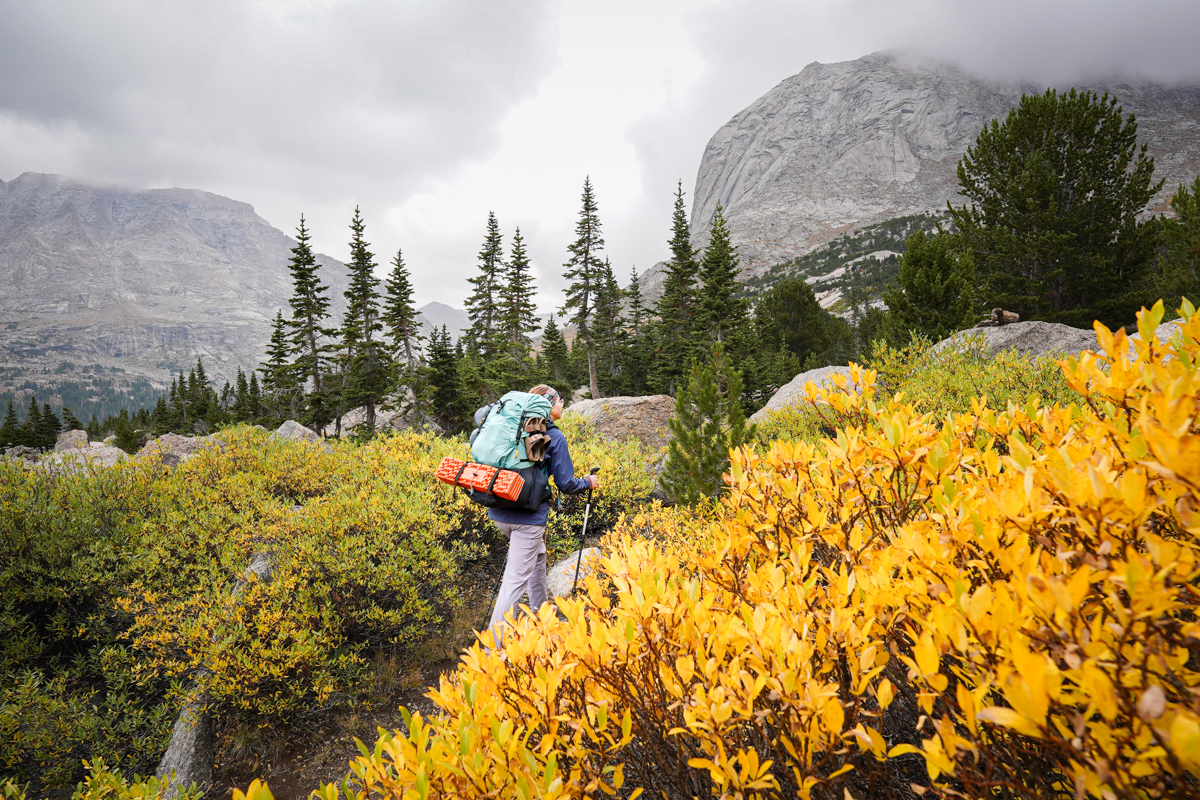
How thick the material is will play a big role in a hiking pant’s best uses. You’ll see everything from thin, summer-ready designs all the way to medium-thick softshell pants in this wide-ranging category, so it’s important to know what you’re looking for. From our list above, options like the Columbia Silver Ridge Cargo and Marmot Arch Rock excel in hot temperatures with their thin, breathable fabrics. Many of the core models above are designed for three-season use, like the Outdoor Research Ferrosi, Prana Stretch Zion, and Kühl Renegade. And thicker pants like the Arc'teryx Gamma and Outdoor Research Cirque are great for the alpine, shoulder seasons, and even light winter use. Keep in mind that throwing on a pair of baselayers underneath can make many three-season pants very agreeable in the wintertime as well.
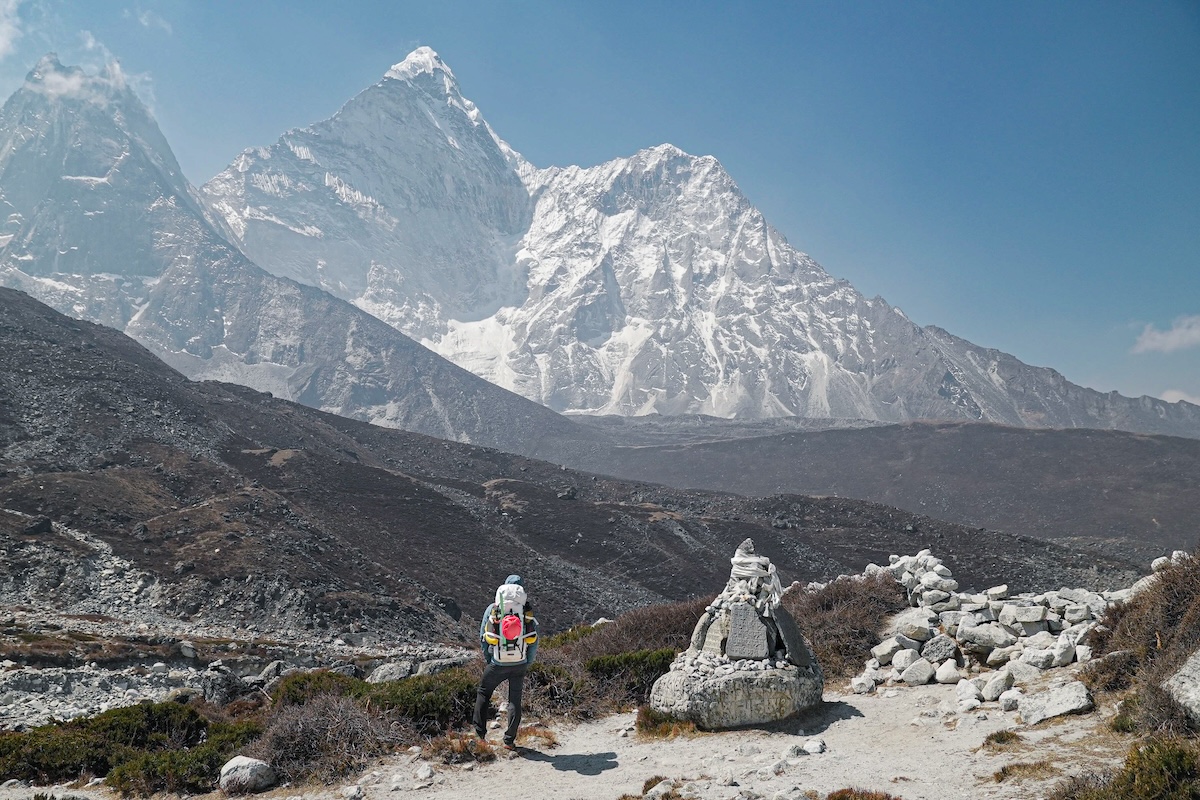
It's important to clock a healthy handful of miles in your hiking pants before setting off on any serious trek, as you want to be confident they won't restrict your movements or cause chafing mid-trip. This can be difficult to gauge from a product description, and we recommend trying hiking pants on in a store whenever possible before making a decision. A thick, durable pair of hikers may sound attractive, but when you actually take them for a spin in the backcountry, that chunky fabric may rub uncomfortably on your legs or cause you to overheat. Conversely, your objective may require bombproof fabric if bushwhacking or technical scrambling is on the docket, and heavier materials could be a requisite. Taking the whole range of conditions you plan to encounter on your trip into consideration is key for narrowing in on the perfect pants for your needs.
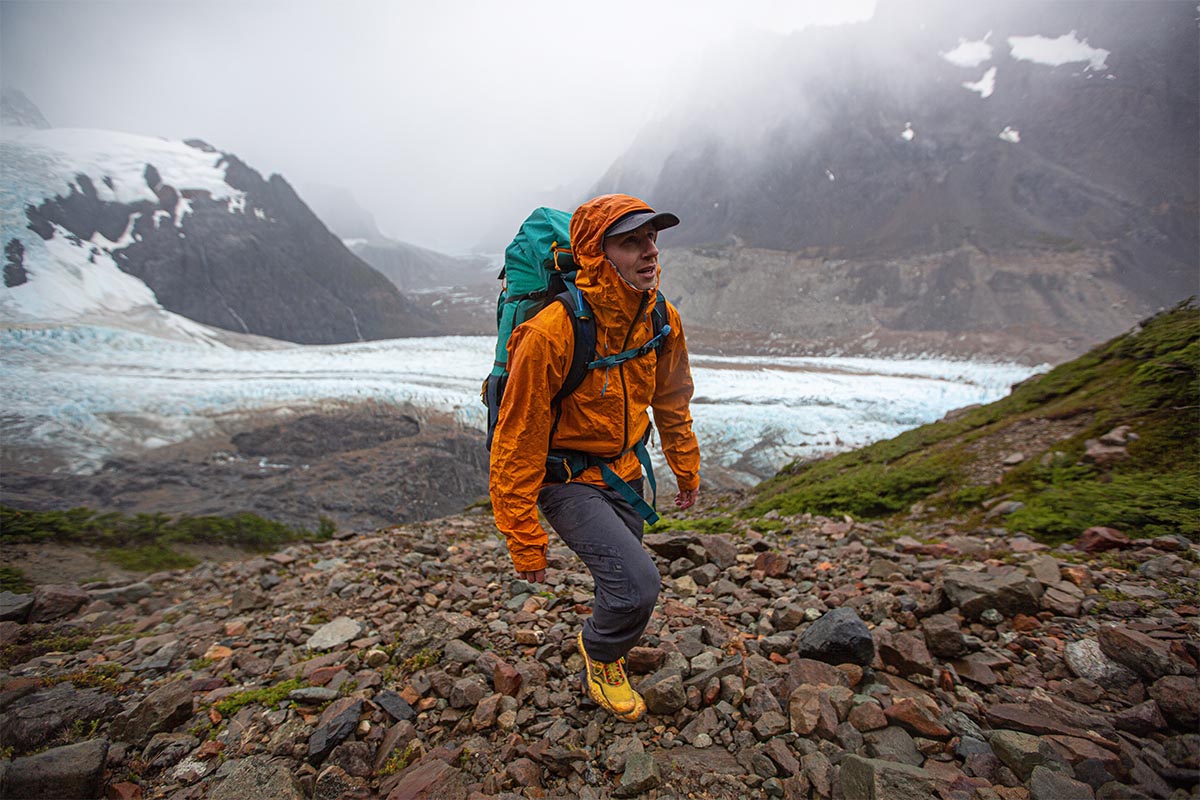
Beyond temperature considerations, thickness often correlates with durability and tear resistance. Most of the softshell-style pants like the Patagonia Terravia Trail and Prana Stretch Zion are tough enough that we had few concerns brushing up against and squeezing between rocks and brush on the trail. Both the Marmot Arch Rock and OR Ferrosi have surprising levels of durability despite their lighter feel. Truly summer-specific pants like the Columbia Silver Ridge are more tear-prone and should be restricted to more casual hiking and backpacking.
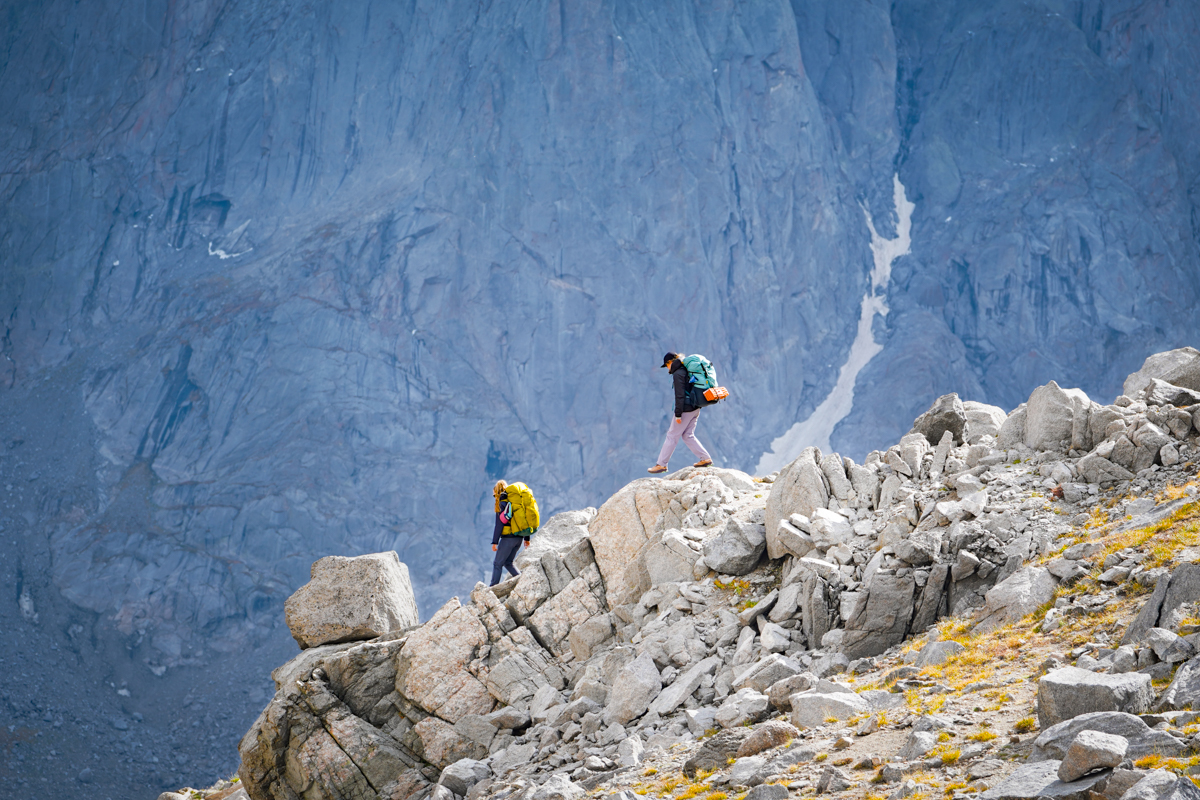
With the ability to zip off and convert into shorts, convertible pants are a popular choice for year-round hikers and outdoor adventurers. The benefits are readily apparent: A 2-in-1 style means you don’t have to pack extra clothing, and it's a quick process to increase leg ventilation.
While we appreciate the flexibility a convertible pant brings, in use, it’s still not for everyone. Outside of the potential qualms that some have about the look, zip-off pants are often not as practical as you’d probably think. The extra zippers can be a pain to use, and no matter the design, they add bulk. Additionally, in designing a pant that has to accommodate the additional pinch points the zippers create, you’ll often get a baggier fit. One of the better designs on the market, the Kühl Renegade is still a bit heftier-feeling than a standard hiking pant, even with its low-profile zippers. As a result, roll-up pants are becoming more and more popular in both men’s and women’s styles. The big benefit is you don’t have to fuss with zippers; all that’s required is a low-profile button and some tabs to secure the pant legs, and you get many of the ventilating benefits of a zip-off in a ¾ length.
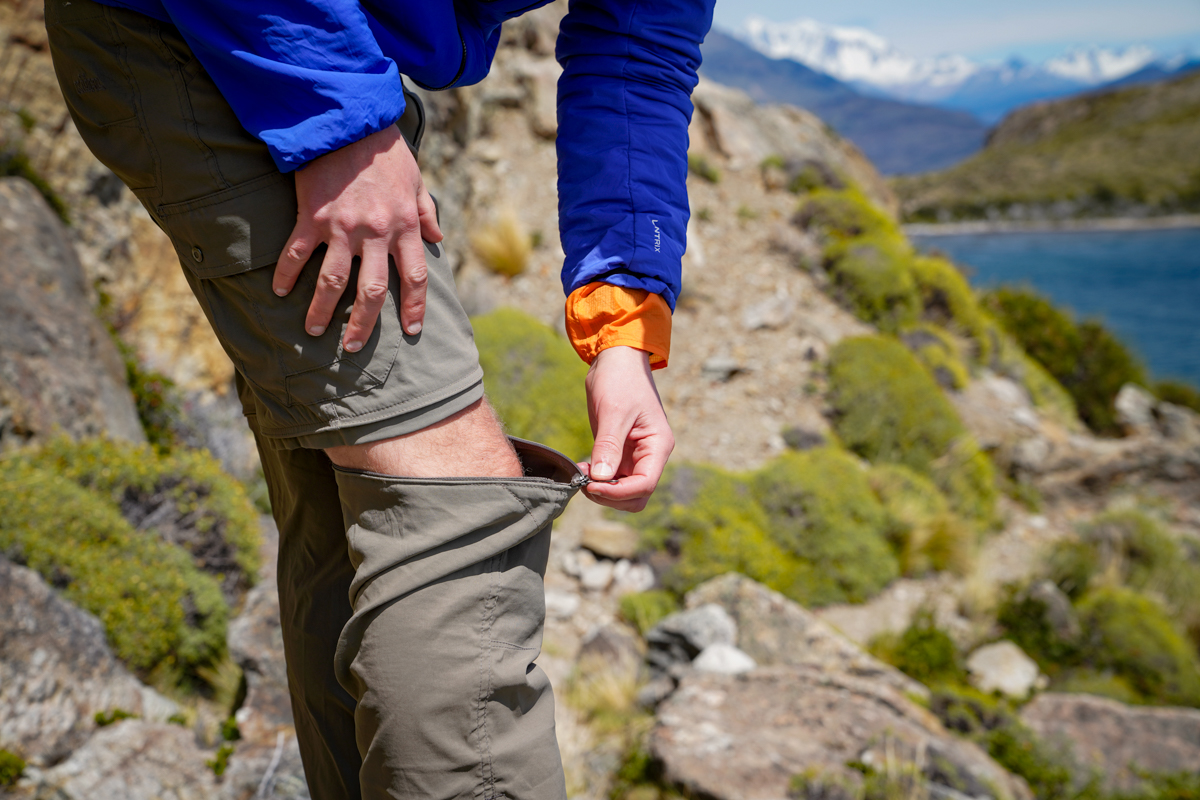
Many of the pants on this list are hiking-centric and look more at home on-trail than off. That said, we do appreciate a hiking pant that can double up for everyday use or be worn as travel pants. In particular, outdoor clothing brands like Kühl, Prana, and Patagonia (depending on the model) tend to cross over well as everyday pants. Even more capable hiking models like the Outdoor Research Ferrosi can pull double duty around town, although the thin fabric and basic pocket layout make them less appealing for everyday use than options like the Prana Stretch Zion. And our Fjallraven Vidda Pros look so unique that we always jump on an opportunity to wear them. The point is, if you like to wear your hiking pants around town, there are a number of good options for that.
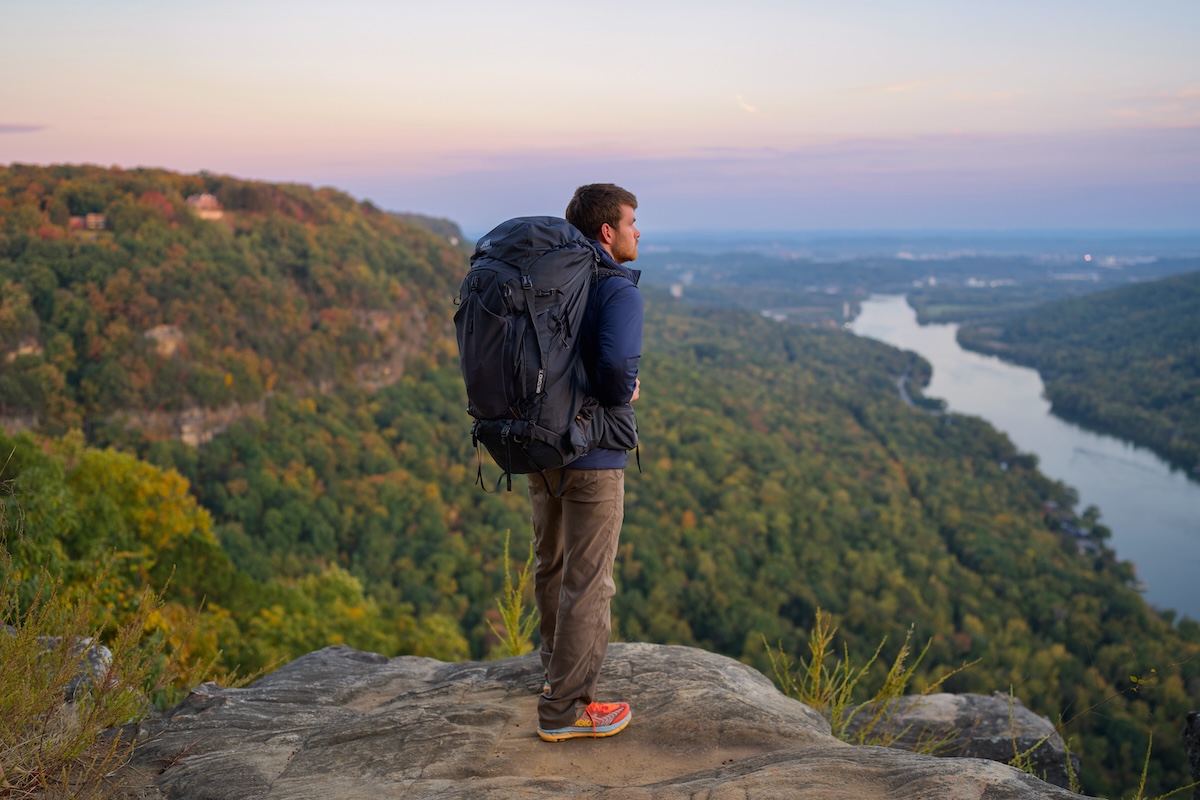
Finding the right fit in hiking pants can be a tough task, particularly in the past when the options were more limited. At that time, we found that Rab was one of the few brands offering a more agreeable cut that didn’t feel excessively baggy—as is the case with Rab's Incline pant. Nowadays, there are a number of pants that hit that sweet spot for us, with an athletic fit that isn’t overly tight. Outdoor Research, Prana, and Arc'teryx all have this concept down quite well, and REI and Columbia have recently changed the fit of a number of their pants to bring them in line with the competition. For a more relaxed fit, the Kühl Renegade strikes us as a good balance of a bit of extra space without swishing around like a pair of old windbreakers.
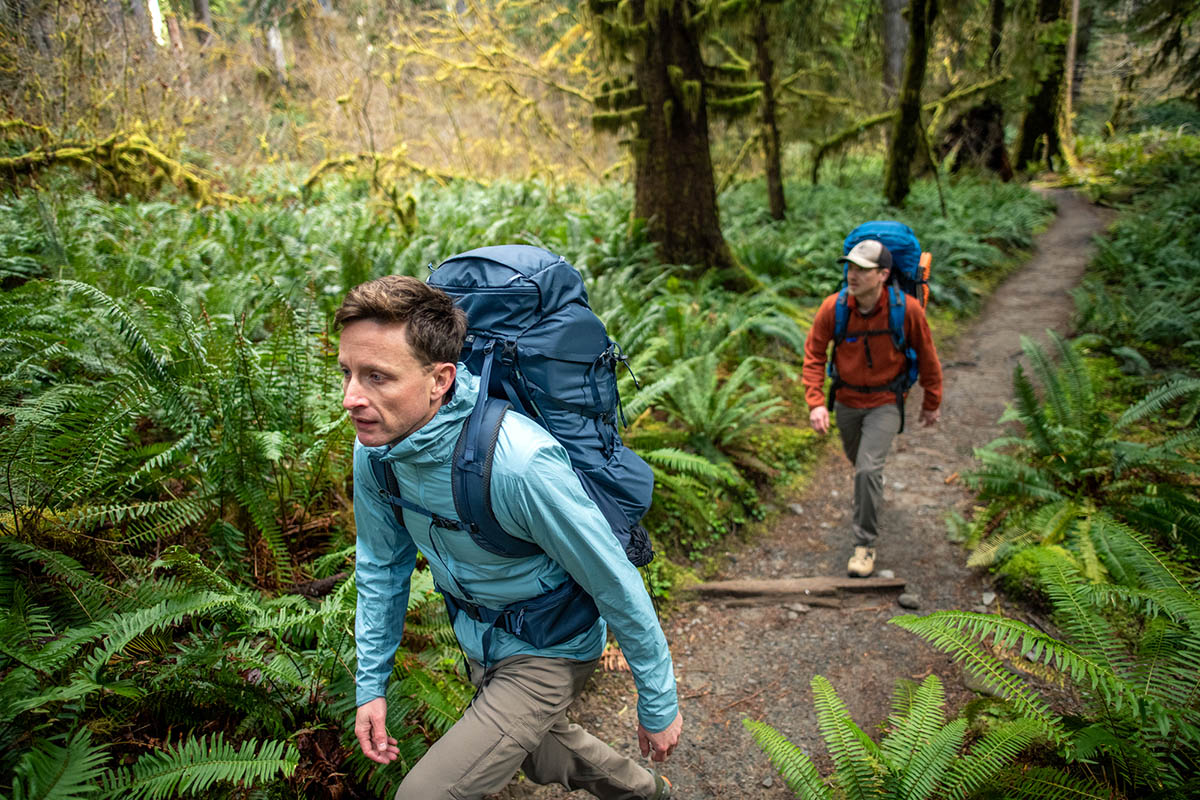
We appreciate when companies go the extra mile toward creating more sustainability built products, and the most common practice in the hiking pant world is the use of recycled fabrics. Many of the picks above are made with at least some recycled content, including designs like the Outdoor Research Ferrosi (46% recycled material). Other measures to look out for include certification to the Fair Trade standard, bluesign-approved materials, and PFAS-free DWR coatings (traditional coatings use per- or polyfluorinated chemicals—"forever chemicals" known to be harmful to the environment). Leading brands of the sustainability movement include Patagonia, REI Co-op, and Prana, although most of the companies above have started incorporating at least some of these practices into production.
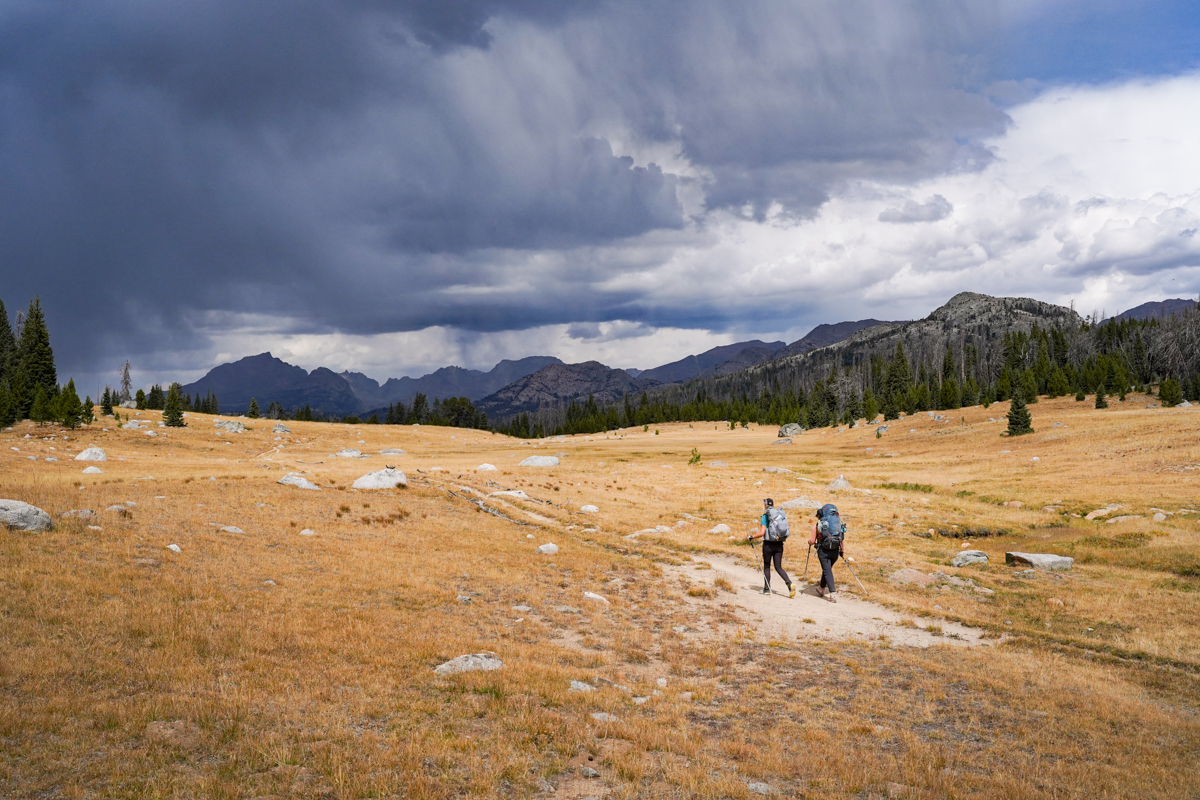
If you're heading out on an overnight backpacking trip or the weather is iffy, pants are the obvious choice. But hikers that hit the trail in the warm summer months are left with a difficult decision: Pants or shorts? Choosing full-length pants gives you better protection from the sun and helps keep dirt and rocks from getting into your shoes. Further, they're the preferred selection for technical hikes or summit bids to reduce the number of scratches or cuts you get when brushing against rocks or branches. But we love shorts for day hikes on well-maintained trails. Shorts are cheaper (typically about $10 to $20 less than a comparable pant) and offer better freedom of movement and ventilation. The final option is convertible pants—like Kühl's Renegade Convertible—which give you the ability to bounce between styles, although they come with a fair number of downsides (we cover those in detail in the convertible pant section above).
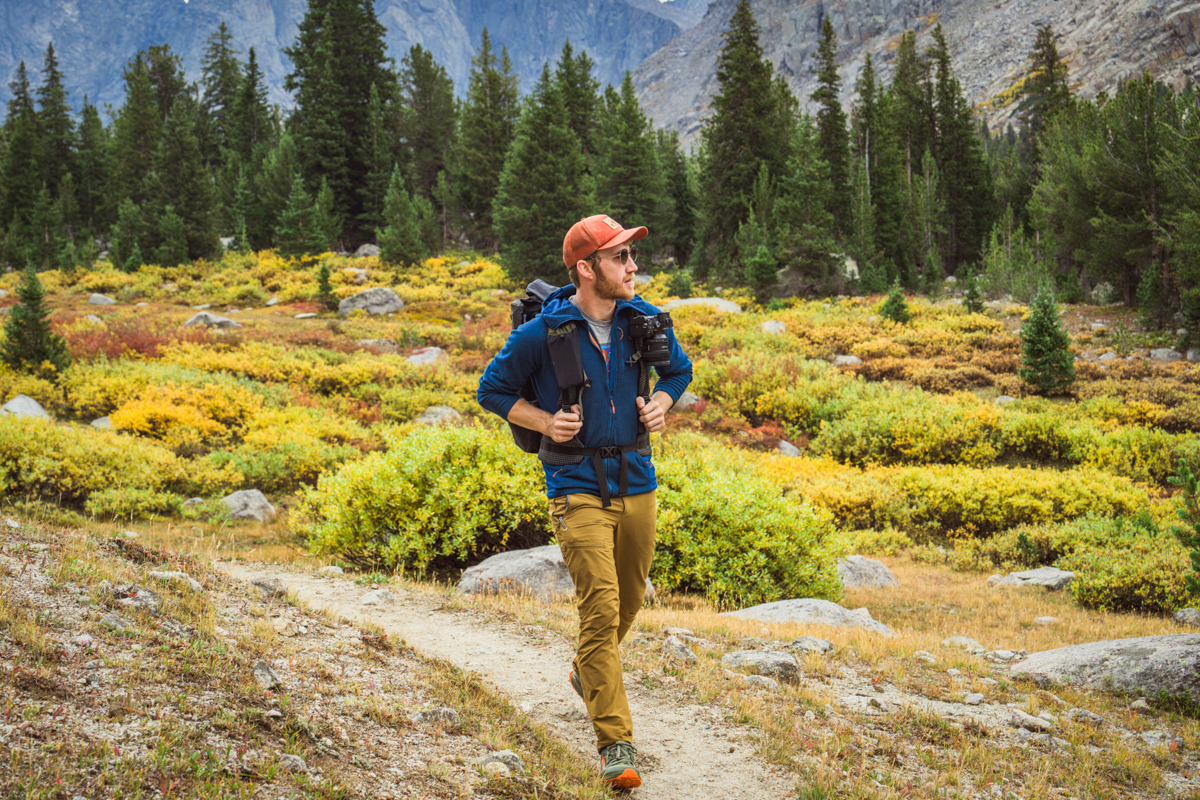
The good news for those who want to pick up a pair of hiking shorts is that many of our favorite pants are offered in this style. In general, the shorts version will have a similar fit, fabric blend, and pocket layout as their full-length counterparts. From the models we've worn, we think the Outdoor Research Ferrosi Short is one of the best. Other favorites include Prana's Stretch Zion Short II and Kuhl's durable Renegade. And if you want a superlight and breathable option, a trail-running-specific short can do the trick (we've worn a range of styles from Salomon, Brooks, and REI). The biggest downside with running shorts is that you give up some durability with their thin polyester constructions.
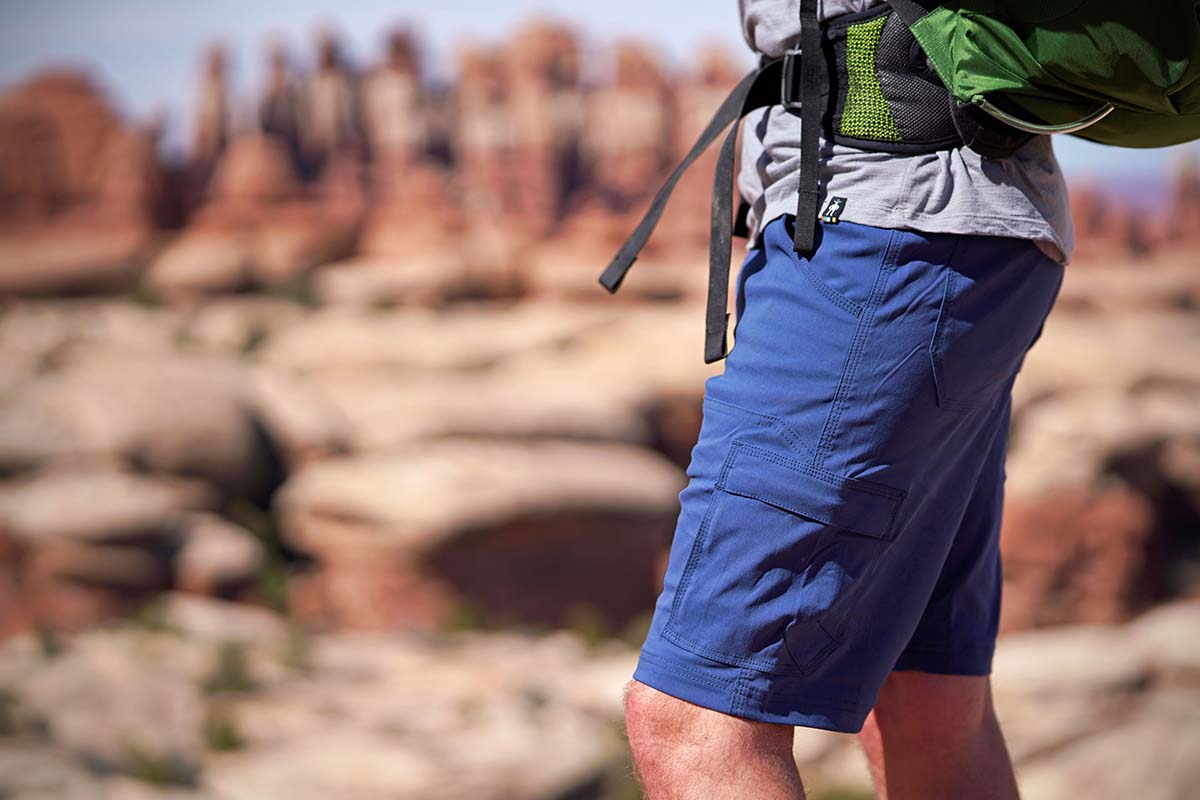
Our picks above were selected based on the experiences of both male and female testers, and you’ll notice that wherever available, we link to both the men’s and women’s versions. That said, due to this category’s noteworthy variation in styles, we’ve also created a unique round-up of the best women’s hiking pants. In this article, you’ll find many of the same models here (names and colorways often differ) in addition to a variety of women’s-specific hiking pants and trail-worthy leggings.
Back to Our Top Hiking Pant Picks Back to Our Hiking Pant Comparison Table